Travel in November 2023 | 2023年十一月的旅行
Osaka Japan 日本大阪
Bustling with neon-lit streets and an infectious zest for life, Osaka is Japan’s culinary and cultural powerhouse—a city where historic castles stand alongside futuristic skyscrapers, and every alleyway leads to mouthwatering street food. Known as the “Nation’s Kitchen,” Osaka dazzles food lovers with crispy takoyaki (octopus balls), savory okonomiyaki (Japanese pancakes), and melt-in-your-mouth kushikatsu (deep-fried skewers), best enjoyed in the lively Dotonbori district under the iconic Glico Running Man sign. Beyond its foodie paradise status, Osaka boasts the majestic Osaka Castle, a symbol of samurai legacy, and the cutting-edge Umeda Sky Building’s Floating Garden Observatory with panoramic city views. The city’s playful spirit shines through in its comedy traditions (manzai) and Universal Studios Japan’s Wizarding World of Harry Potter. From shopping in Shinsaibashi’s endless arcades to exploring the retro charm of Shinsekai, Osaka blends old-world charm with modern thrills—a city that never sleeps and always delights.
霓虹闪烁、活力四射的大阪,是日本美食与文化的激情碰撞之地——历史城堡与摩天大楼比邻而立,巷弄深处飘来阵阵诱人香气。被誉为”天下厨房”的大阪,用章鱼烧的酥脆、大阪烧的咸香和串炸的脂香征服味蕾,最适合在道顿堀奔跑的格力高广告牌下大快朵颐。除了美食天堂的美誉,大阪城诉说着武士传奇,而梅田蓝天大厦的空中庭园展望台则将城市全景尽收眼底。城市的幽默基因体现在漫才喜剧文化中,日本环球影城的哈利波特魔法世界更添奇幻色彩。从心斋桥的购物长廊到新世界的复古街区,大阪完美融合怀旧风情与现代娱乐——这是一座永不入眠、永远欢腾的都市。
12D11N trip to Kansai Part 4
🍢 Day9: Foodie Paradise
At Kuromon Market, we gasped at a crab wider than my face! Must-tries:
– Chef’s knife skills preparing fugu sashimi
– Butter-scallops sizzling on charcoal
– Oden stall with 100-year-old broth recipe
🎡 Dotonbori Night
Under the Glico running man, we found perfect photo spot on Ebisu Bridge. Nearby, a takoyaki master flipped balls with ballet-like grace!
🎭 Time Travel
In Hozenji Yokocho, lanterns lit stone-paved alleys where geishas hurried past. Then Amerikamura shocked us with neon graffiti and laser dance shows!
🏯 Day10: 2-Day Osaka Amazing Pass Itinerary
🏯 Morning: Explore Osaka Castle 🏯, then enjoy a scenic Osaka Castle cruise 🚤 along the moat. Step back in time at the Museum of History 🏛️ for panoramic views of the castle from above.
🍱 Lunch: Refuel at Osaka Station (Umeda) 🍣 with local delights like takoyaki or katsu don.
🌆 Afternoon: Ascend the Umeda Sky Building KUCHU-TEIEN OBSERVATORY 🌆 and linger until sunset for breathtaking city views. Then, ride the iconic red HEP FIVE Ferris Wheel 🎡.
✨ Evening: Admire festive Christmas illuminations 🎄 at Osaka City Hall.
⚓ Day11: Harbor Day
🗼 Morning: Visit Tsutenkaku Tower (Observation Deck) 🗼 for retro Osaka vibes, then zoom down the thrilling Tower Slider 🛝.
🍜 Lunch: Grab a quick bite before boarding the Santa Maria Day Cruise ⛴️ for a bay-area voyage.
🎡 Afternoon: Ride the Tempozan Ferris Wheel 🎡 for portside views (note: G-LION MUSEUM 🦁 is closed).
🎨 Late Afternoon: Discover traditional woodblock prints at Kamigata Ukiyoe Museum 🎨.
🚤 Evening: Glide through neon-lit canals on the Tombori River Cruise 🚤, passing the Glico Man sign 🏃♂️.
🌃 Final Day
8:00 🦁 Namba Yasaka
The lion shrine’s gaping mouth “ate” our bad luck. The miko priestess blessed us: “This omamori will bring you back!”
14:00 🛍️ Last Shopping
At Doguyasuji, we scored adorable rice scoops for ¥100. The takoyaki vendor gave extra balls: “Bring friends next time!”
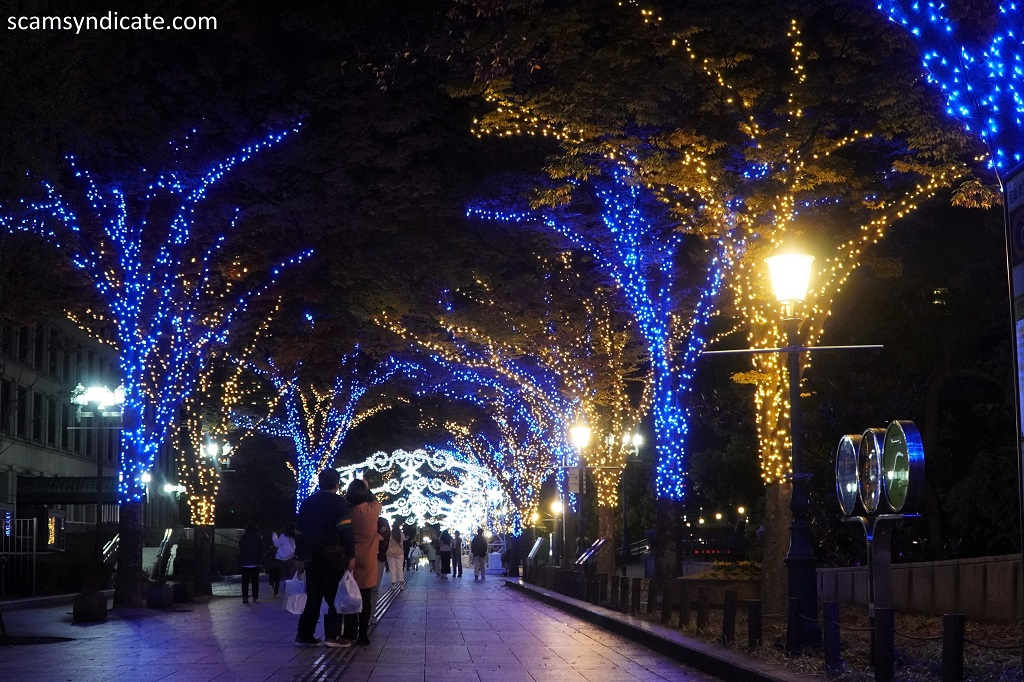
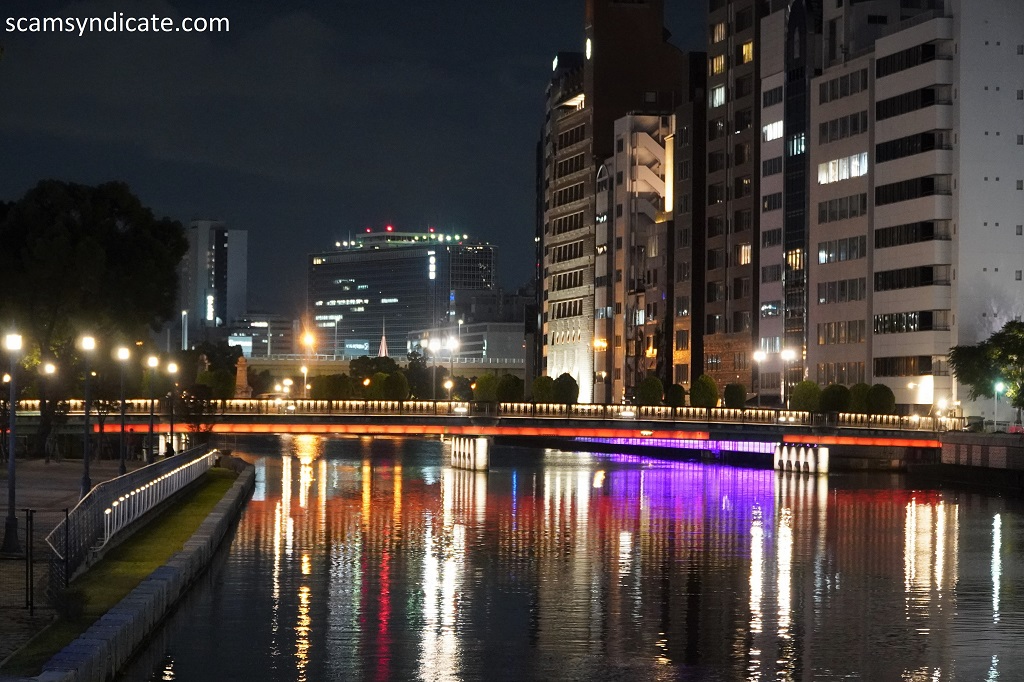
12天11夜关西之旅第四部分
🍢 第9天:舌尖上的大阪
“叮——”随着JR列车到站的提示音,我们终于回到了美食天堂大阪!
12:00 🦀 黑门市场大冒险
“这只帝王蟹比我的头还大!”我们像寻宝一样穿梭在200多家店铺间:
– 现杀河豚刺身师傅的刀工堪比艺术表演
– 烤扇贝的黄油香气勾得我们走不动路
– 老奶奶的关东煮摊,萝卜吸饱了百年老汤的精华
18:00 🎡 道顿堀夜未眠
格力高跑男招牌下挤满拍照的游客,我们发现了绝佳机位——戎桥中央的第三根栏杆!突然一阵香气飘来,原来是大阪烧师傅正在我们面前”翻跟头”。
21:00 🎭 穿越时空之旅
在浮世小路偶遇穿和服的艺伎,灯笼映照下的鹅卵石路仿佛把我们带回了江户时代。美国村的涂鸦墙上,街头艺人正在表演激光舞,现代与复古在这里奇妙交融!
🏯 第10天:大阪周游券2日行程
🏯 上午: 游览 大阪城 🏯,乘护城河 游船 🚤。从 历史博物馆 🏛️ 俯瞰城堡全景。
🍱 午餐: 在 大阪梅田駅 🍣 品尝炸猪排饭。
🌆 下午: 登上 梅田蓝天大厦 空中庭园展望台 🌆 欣赏日落,再搭乘红色 HEP FIVE摩天轮 🎡。
✨ 晚上: 到 大阪市役所 观赏圣诞灯饰 🎄。
⚓ 第11天:海港浪漫
🗼 上午: 探访 通天阁展望台 🗼,体验复古大阪风情,再滑下刺激的 通天阁滑梯 🛝。
🍜 午餐: 简餐后搭乘 圣玛利亚号白天游船 ⛴️ 游览大阪湾。
🎡 下午: 乘坐 天保山摩天轮 🎡(注: G-LION博物馆 🦁 休馆)。
🎨 傍晚: 在 上方浮世绘馆 🎨 欣赏传统木版画。
🚤 晚上: 乘 道顿堀水上观光船 🚤 穿越霓虹河道,打卡格力高广告牌 🏃♂️。
🌃 最终日:告别仪式
8:00 🦁 难波八坂神社
狮子殿张开的大口仿佛要吞掉所有厄运。我们买了小狮子御守,巫女笑着说:”它会保佑你们再回大阪哦~”14:00 🛍️ 最后血拼
在道具屋筋商店街,我们淘到了100日元的可爱饭勺。相合桥筋的章鱼烧摊主多送了我们两颗:”下次要带朋友来啊!”
🍣 Minami Area | 南区(难波 & 心斋桥周边)
🍢 Kuromon Market | 黑门市场
Kuromon Market, affectionately called “Osaka’s Kitchen,” is a vibrant 580-meter-long covered market street in Nipponbashi packed with over 150 shops and stalls selling the freshest seafood, premium Kobe beef, seasonal fruits, and Osaka street food staples like takoyaki and fugu (blowfish). Since its 1902 founding, this bustling culinary paradise has been where chefs and locals shop, offering unforgettable food experiences from ¥500 fresh oysters shucked to order to $100 melons, with the best tuna auctions starting at 5am. Don’t miss the market’s signature giant crab legs, melt-in-your-mouth toro sushi, and the chance to watch skilled butchers prepare wagyu beef while exploring this sensory overload of sizzling grills, shouting vendors, and the irresistible aroma of grilled scallops that captures Osaka’s passionate food culture.
被大阪人亲切称为”浪花食堂”的黑门市场,是位于日本桥长达580米的拱顶美食长廊,汇集了150多家店铺,从现杀现吃的极品河豚、神户牛到当季水果应有尽有。自1902年开业以来,这里始终是大阪厨师与老饕的采购圣地——清晨5点的金枪鱼拍卖、现场撬开的500日元生蚝到价值千元的蜜瓜,还有市场招牌的巨型帝王蟹腿和入口即化的拖罗寿司,空气中永远飘荡着章鱼烧的香气与炭烤和牛的滋滋声。穿梭于摊位间观看师傅庖丁解牛,或是来一份现烤扇贝,最能体验大阪人”吃穷也要吃好”的美食信仰。
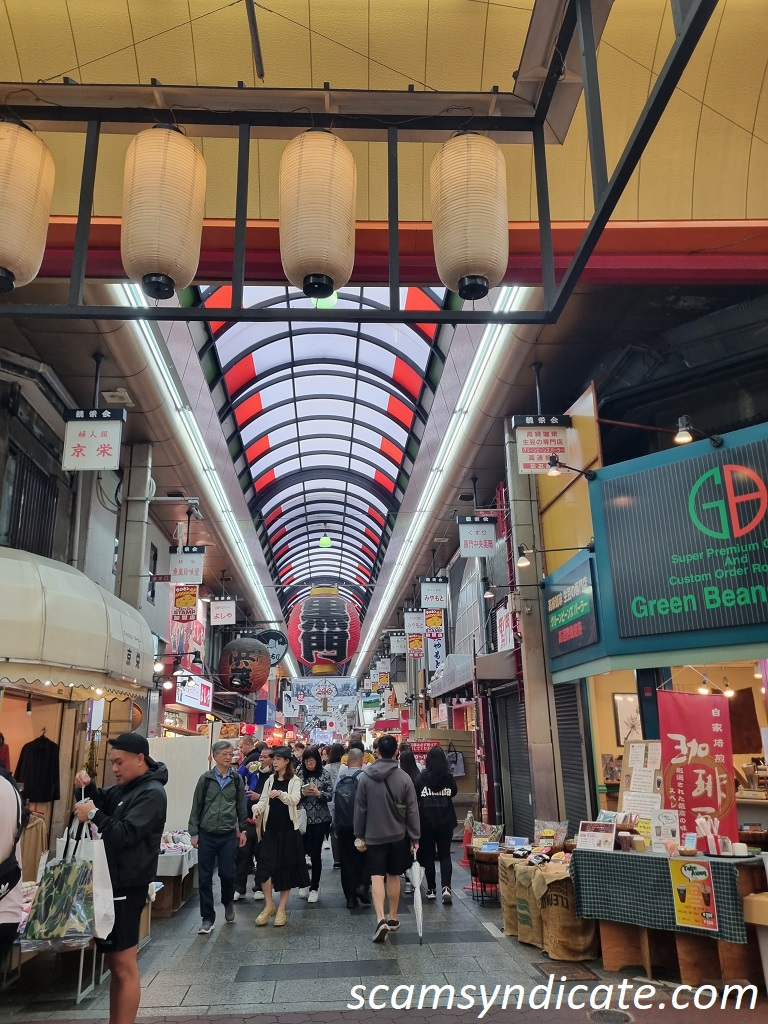
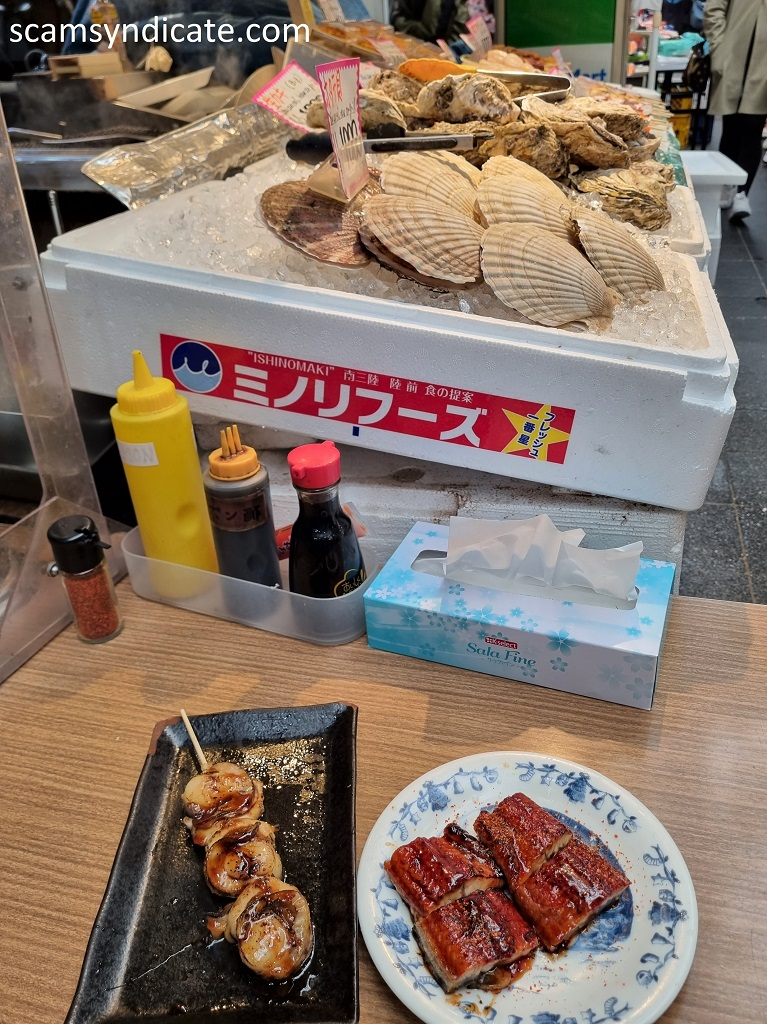
🍜 Dotonbori | 道顿堀
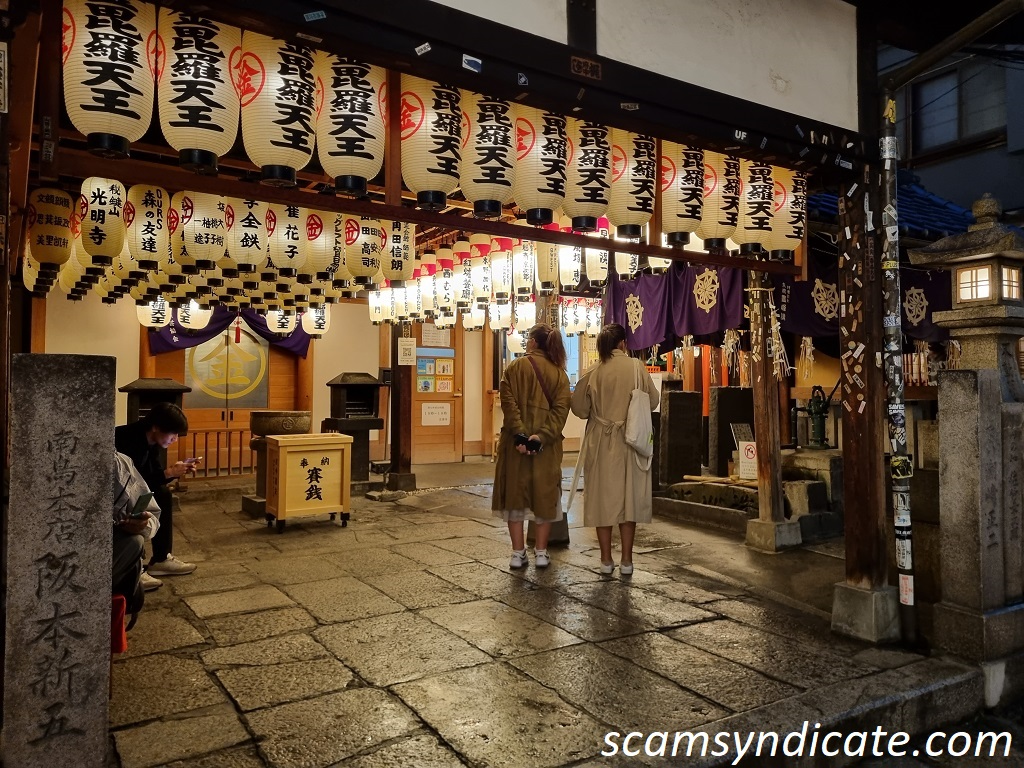
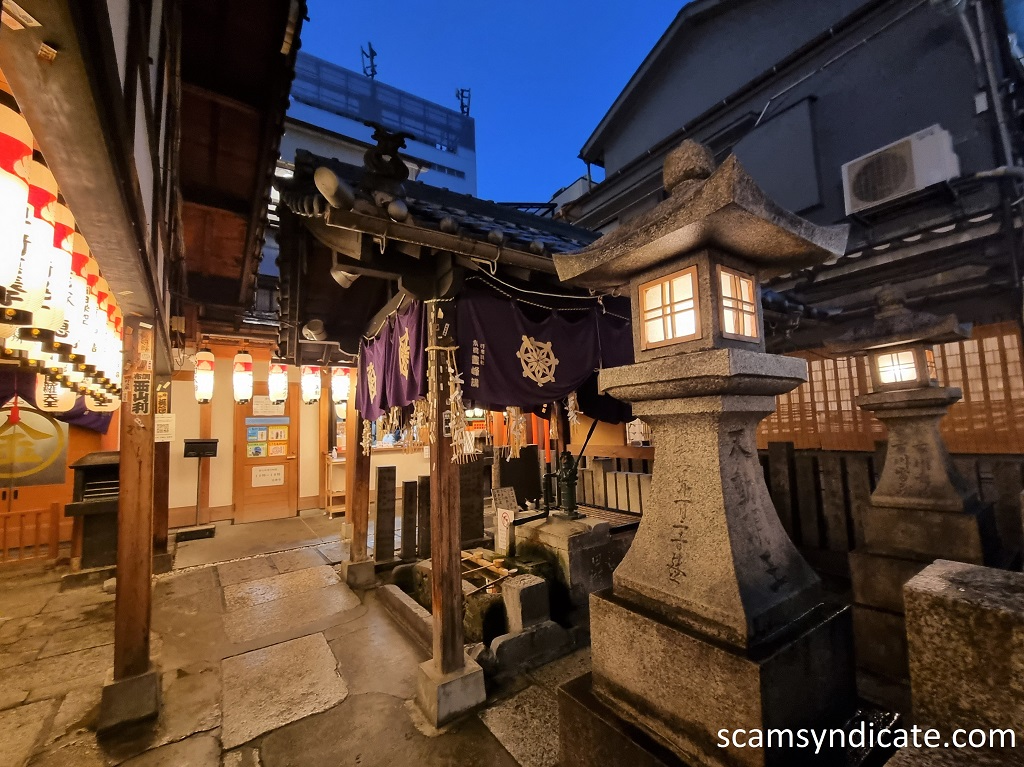
Dotonbori is Osaka’s neon-lit entertainment and culinary heart, where the iconic Glico Running Man sign and massive mechanical crab displays compete for attention along the Ebisu Bridge, while the legendary Kuidaore Taro clown drummer – a symbol of Osaka’s “eat until you drop” food culture – marks the entrance to the historic Nakamuraya restaurant building. Just steps away stands the elegant Shochikuza Theatre, Japan’s oldest surviving Western-style playhouse since 1923, hosting kabuki and modern performances beneath its distinctive green dome. Tucked behind the main drag, Ukiyo-e Alley transports visitors to Edo-period Osaka with woodblock-printed lanterns and traditional shop facades, offering a quiet contrast to Dotonbori’s sensory overload of takoyaki stalls, kushikatsu joints, and the perpetual crowd of foodies photographing their giant crab legs and pufferfish dishes against the glowing canal backdrop.
道顿堀是大阪永不熄灭的霓虹美食剧场,格力高奔跑人广告牌与巨型机械螃蟹在戎桥上争奇斗艳,而标志性的吃穷太郎小丑鼓手——象征大阪”吃到破产”饮食文化的吉祥物——守护着老字号中村屋本店的入口。几步之遥的松竹座剧院以其翠绿圆顶闻名,这座1923年建成的日本现存最古老西式剧场至今仍上演着歌舞伎与现代戏剧。拐入主街背后的浮世小路,浮世绘灯笼与传统町家建筑瞬间将人拉回江户时代,与道顿堀此起彼伏的章鱼烧叫卖声、串炸店油烟味,以及举着帝王蟹腿在运河前自拍的人群形成奇妙反差。
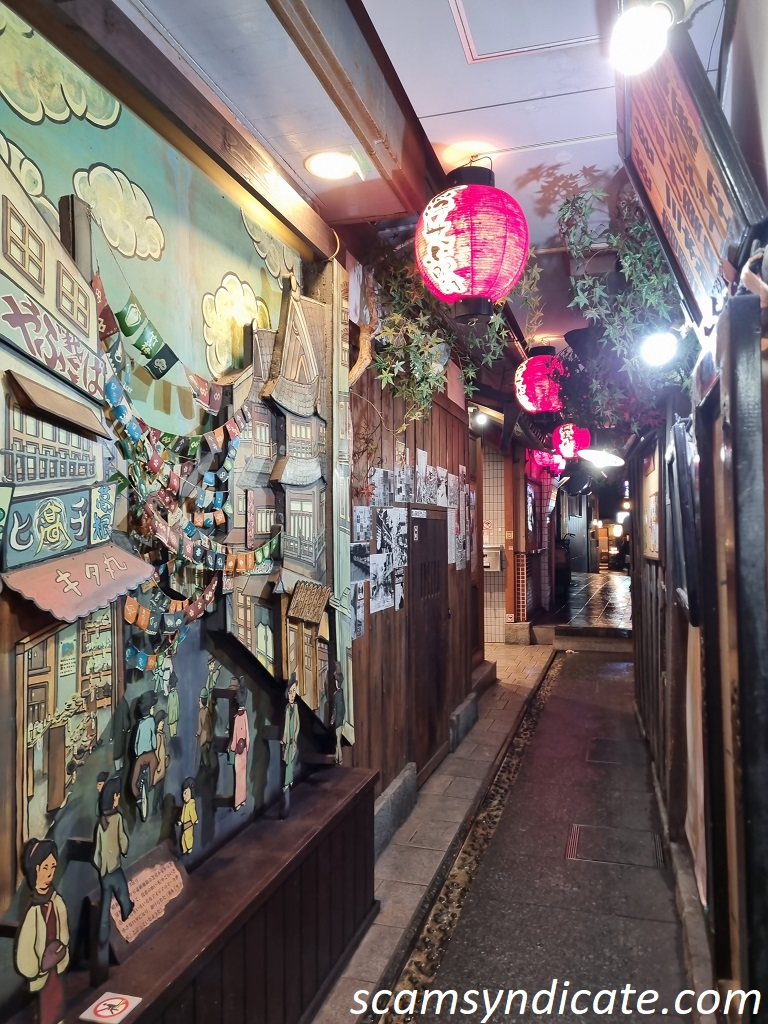
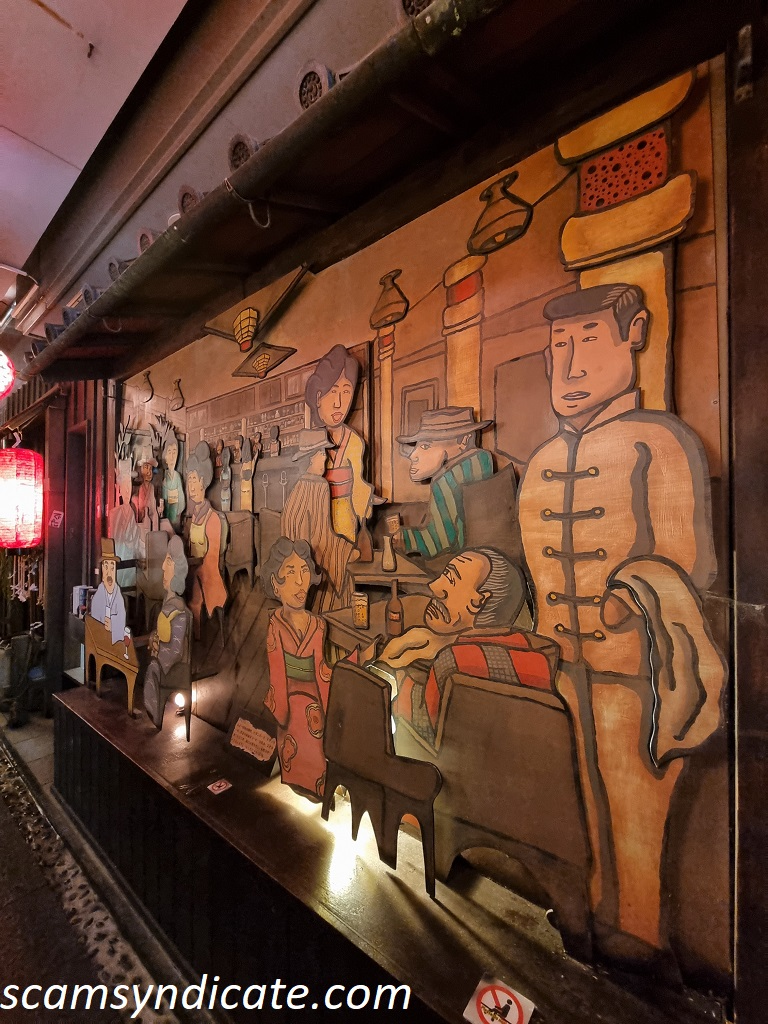
👔 America-mura | 美国村
America-mura (American Village) is Osaka’s vibrant youth culture hub where New York-style street art meets Japanese pop fashion, centered around its quirky 1/3-scale Statue of Liberty replica that has become an iconic selfie spot since the 1980s. The area explodes with colorful murals covering entire buildings, including the famous “Tiger Mural” by artist Usugrow, while hidden alleyways reveal vintage clothing stores and indie cafes. Just a block away, Midosuji Park offers an oasis of cherry trees and fountains along Osaka’s main boulevard, where street performers and skateboarders create constant energy against the backdrop of towering skyscrapers – this compact triangle of urban culture perfectly encapsulates Osaka’s creative spirit where American influences get remixed through a distinct Japanese lens.
美国村是大阪的潮流发源地,这里1/3比例的自由女神像复制品自1980年代起就成为地标打卡点,周围建筑布满前卫壁画,包括艺术家Usugrow创作的经典”老虎壁画”。迷宫般的巷弄里藏着古着店与独立咖啡馆,转个弯就是御堂筋公园——沿着大阪主干道展开的绿洲,春季樱花隧道下常有街头艺人表演,滑板少年在摩天大楼背景中穿梭。这个美式文化经过日式改造的三角区域,完美呈现了大阪青年将外来元素本土化的独特创造力。
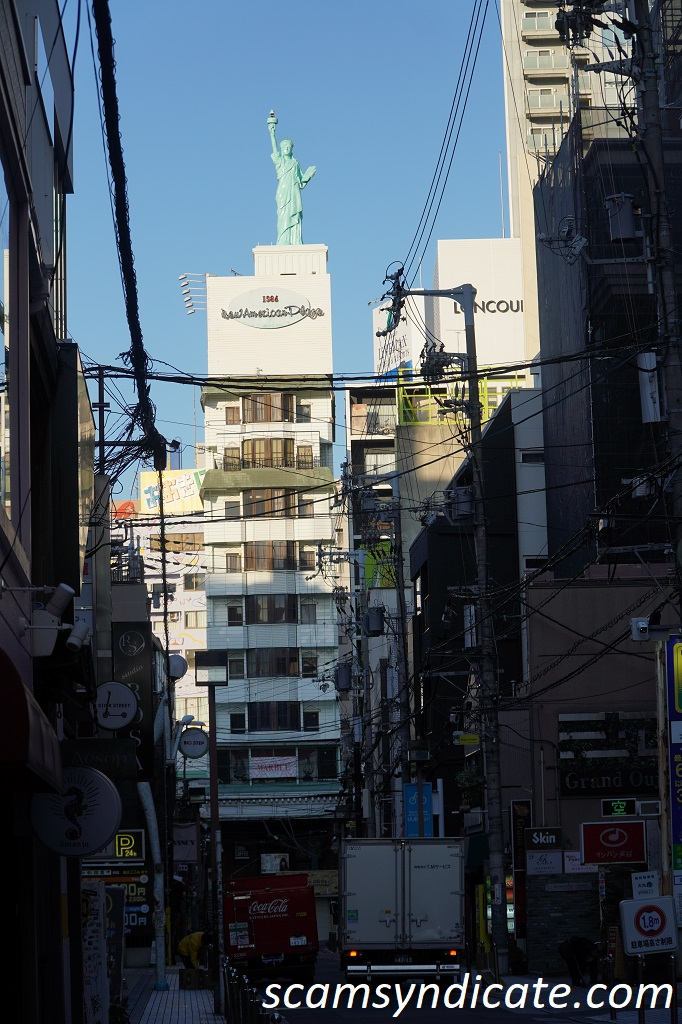
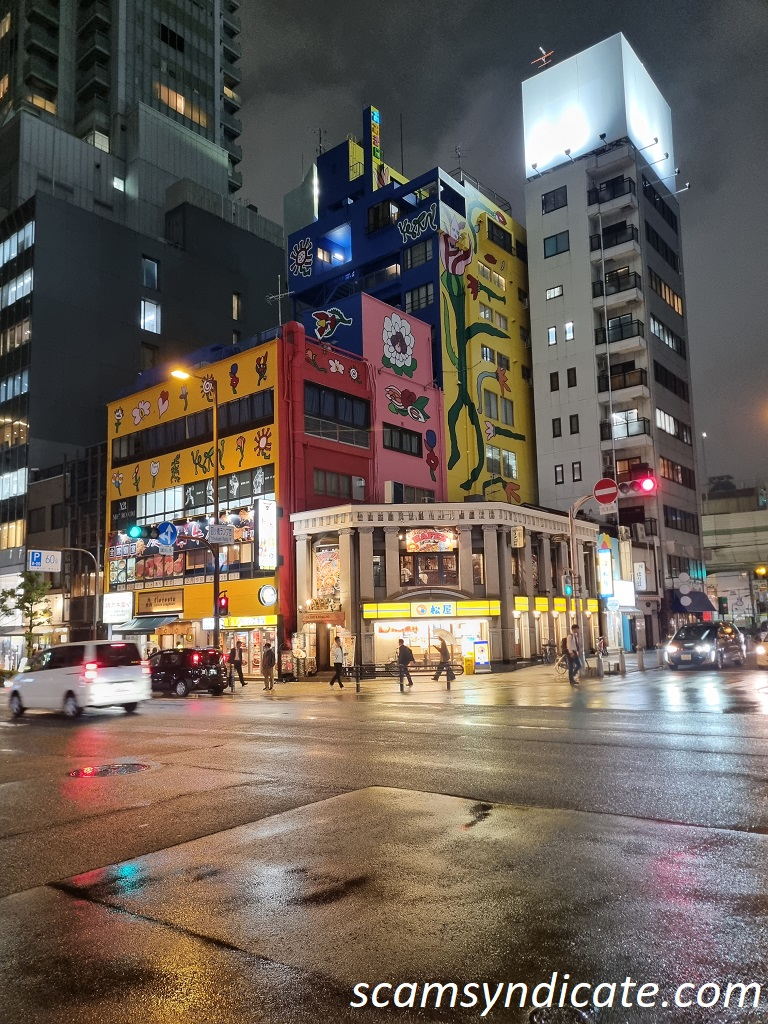
🦁 Namba Yasaka Shrine | 难波八阪神社
Namba is Osaka’s pulsating entertainment and culinary heart where neon-lit streets like Dotonbori and Shinsaibashi collide with the city’s best shopping and street food, while just minutes away stands the extraordinary Namba Yasaka Shrine with its massive 12-meter-tall lion-head stage building that appears to swallow evil spirits – this surreal Shinto structure with wide-open jaws and glaring eyes creates one of Osaka’s most photogenic spiritual sites. The shrine’s annual July festival transforms the lion plaza into a vibrant spectacle of taiko drums and traditional dance, offering a striking cultural counterpoint to Namba’s modern chaos of pachinko parlors, karaoke towers, and 24-hour ramen joints that make this district the ultimate expression of Osaka’s “kuidaore” (eat until you drop) philosophy.
难波是大阪霓虹闪烁的娱乐美食核心区,道顿堀与心斋桥的招牌战场旁,藏着堪称”最上镜神社”的难波八阪神社——其12米高的巨型狮子殿张开血盆大口,据传能吞噬厄运,金瞳怒视的夸张造型与周围摩登街景形成魔幻对比。每年7月大祭时,狮子舞台前太鼓震天与神乐共舞的场面,与周边柏青哥店、卡拉OK塔和彻夜营业的拉面店共同诠释着大阪”吃倒不悔”的市井哲学,让传统信仰与现代喧嚣在此奇妙共生。
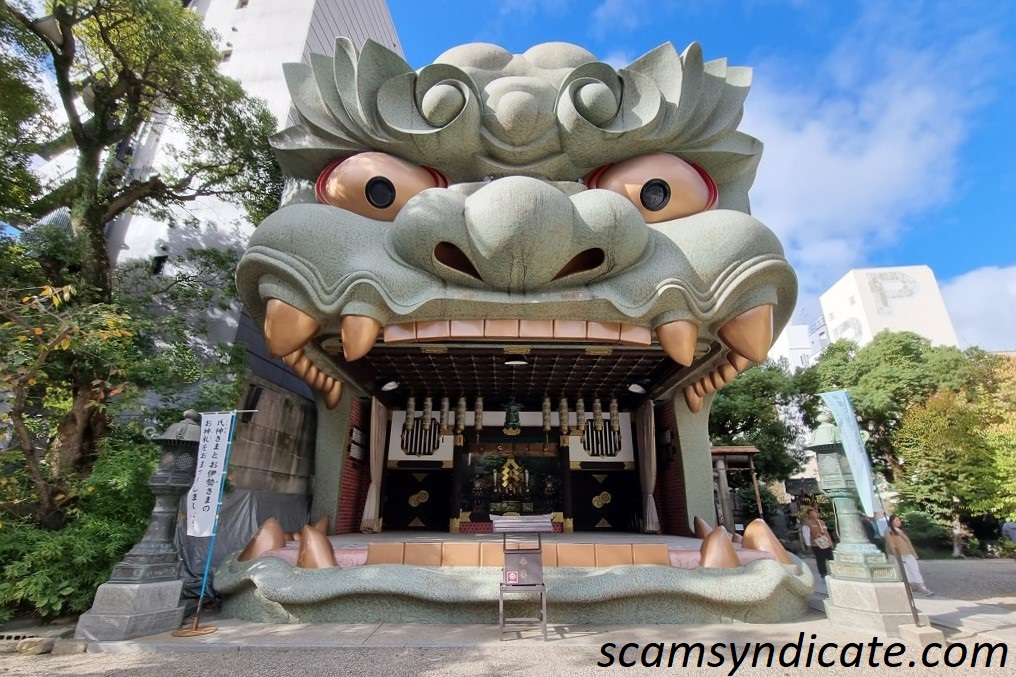
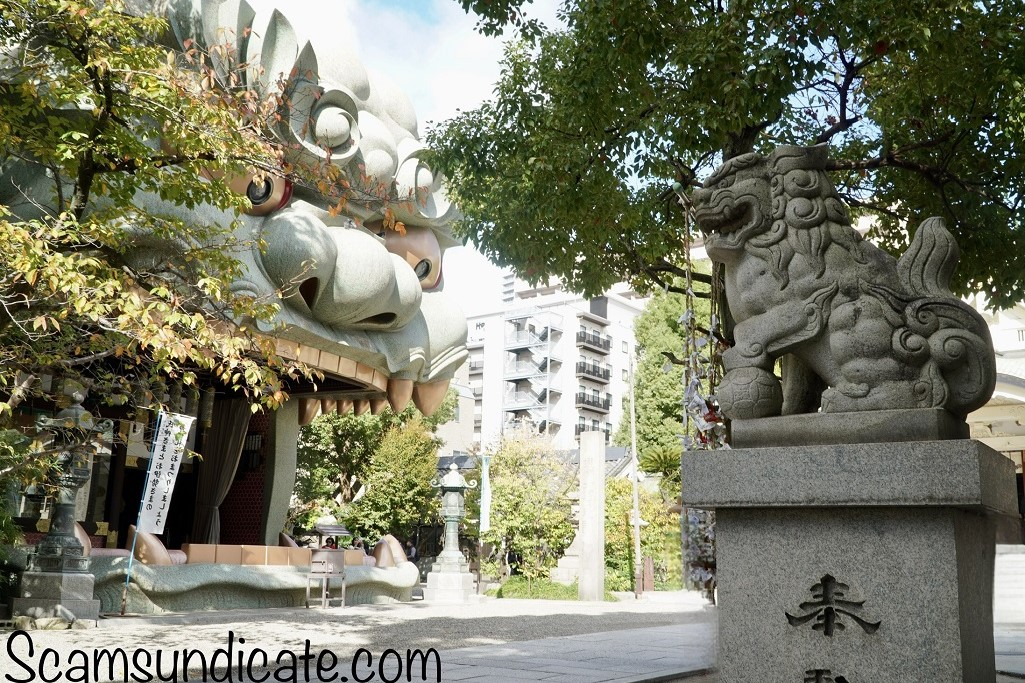
🛍️ Shinsaibashi-Suji | 心斋桥筋商店街
Shinsaibashi-Suji is Osaka’s legendary 600-meter-long covered shopping arcade blending high-end boutiques with century-old kimono shops and sneaker streetwear stores, where the iconic Glico running man neon sign marks its vibrant intersection with Dotonbori’s canal, while just south lies the specialized Sennichimae Doguyasuji – a kitchenware paradise packed with 150+ stores selling professional-grade chef knives, plastic food samples, and restaurant equipment that reveals Osaka’s culinary soul. These parallel consumer universes showcase Osaka’s dual identity: Shinsaibashi’s fashion-forward energy pulsating with LED screens and cosmetic flagship stores contrasts beautifully with Doguyasuji’s utilitarian charm where chefs haggle over copper pots during the day and the plastic sushi replicas glow eerily under neon after dark, together forming the ultimate Osaka shopping experience.
心斋桥筋是长达600米的拱廊商店街传奇,从奢侈品牌旗舰店到百年和服老铺与球鞋潮店在此碰撞,格力高广告牌所在的道顿堀交界处永远人潮汹涌;向南步行5分钟即达专业级”厨房战场”千日前道具屋筋——150余家店铺陈列着匠人打制的料理刀、仿真食品模型与复古咖啡器具,揭开大阪”天下厨房”的幕后秘密。这两条平行宇宙般的商街呈现着大阪的双重性格:心斋桥的时尚霓虹与药妆店人浪,对比道具屋筋里白天厨师挑选铜锅的市井气息与夜间食品模型在灯光下的诡异美感,共同构成最地道的”大阪商魂”体验。
🚤 Dotonbori River Cruise | 顿堀水上观光船
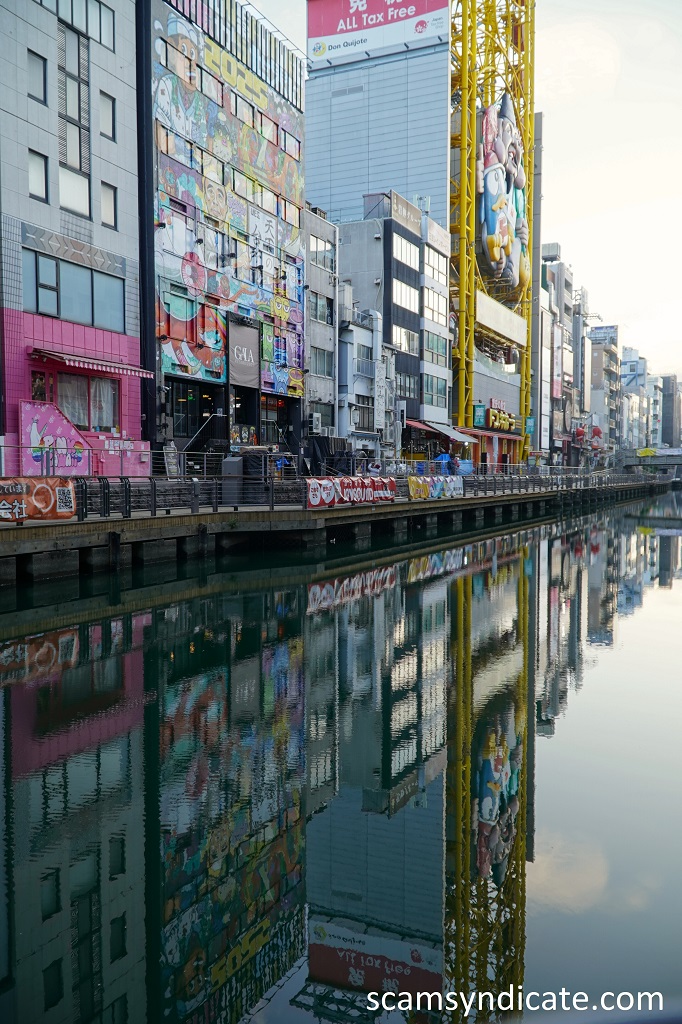
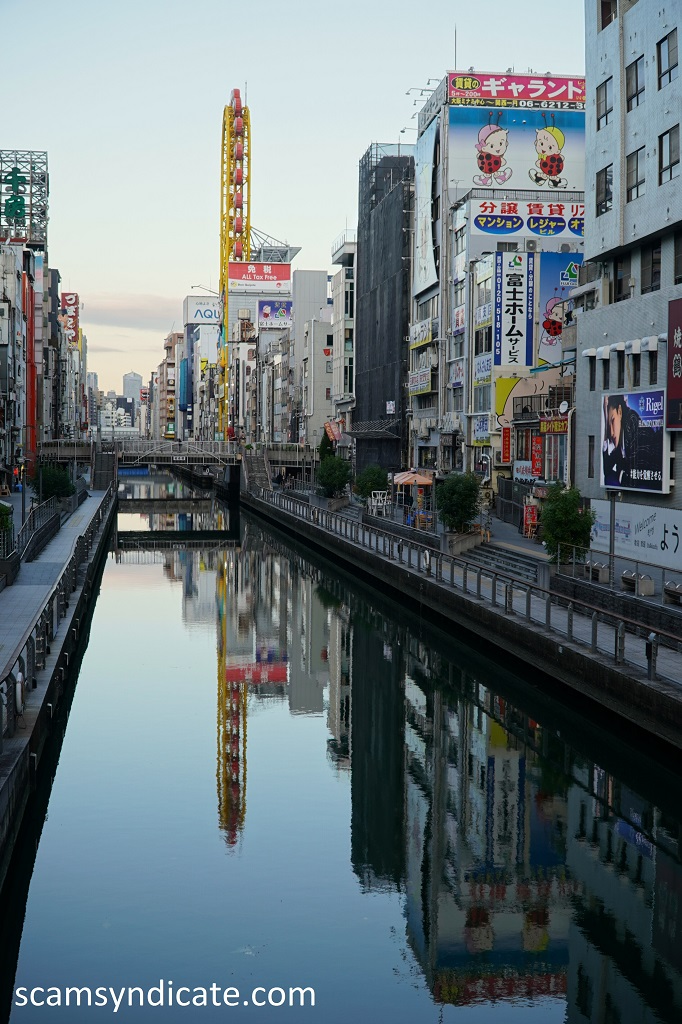
The Dotonbori River Cruise is a 20-minute enchanting water journey through the heart of Osaka’s neon-lit entertainment district, where iconic landmarks like the Glico Running Man sign and giant crab sculptures reflect on the canal’s shimmering surface as the boat glides beneath five historic bridges. Led by entertaining guides sharing humorous stories about Osaka’s food culture and the area’s 400-year history, this open-top boat tour offers unique low-angle views of the bustling Dotonbori streetscapes from water level, especially magical at night when over 7,000 LED lights from surrounding buildings create a dazzling urban light show on the waves – with special seasonal cruises available during cherry blossom and autumn foliage periods when the banks transform with natural colors.
这趟20分钟的水上之旅带领游客穿越大阪最繁华的霓虹街区,游船缓缓驶过五座历史桥梁时,格力高广告牌与巨型螃蟹招牌的倒影在河面摇曳,风趣的船夫会讲解道顿堀400年的美食江湖轶事。从水面仰视熙攘街景的独特视角令人耳目一新,尤其推荐夜间航程——当周边建筑7000余盏LED灯将运河染成流动的光之画卷,春季樱花季与秋枫时节更有限定航线,让自然色彩与都市霓虹在水面上共舞。
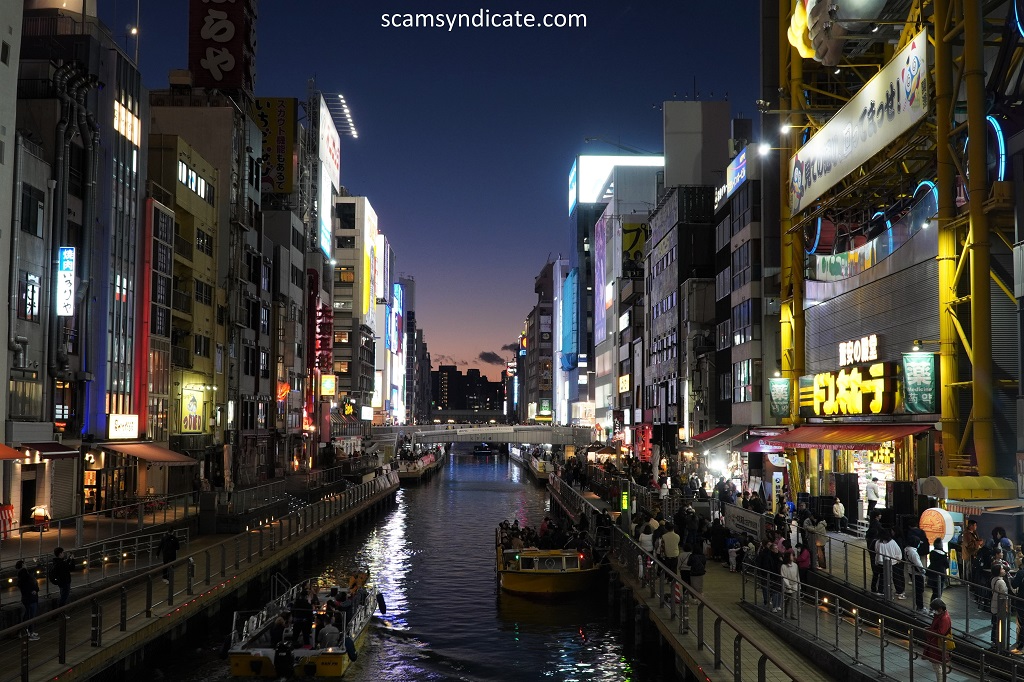
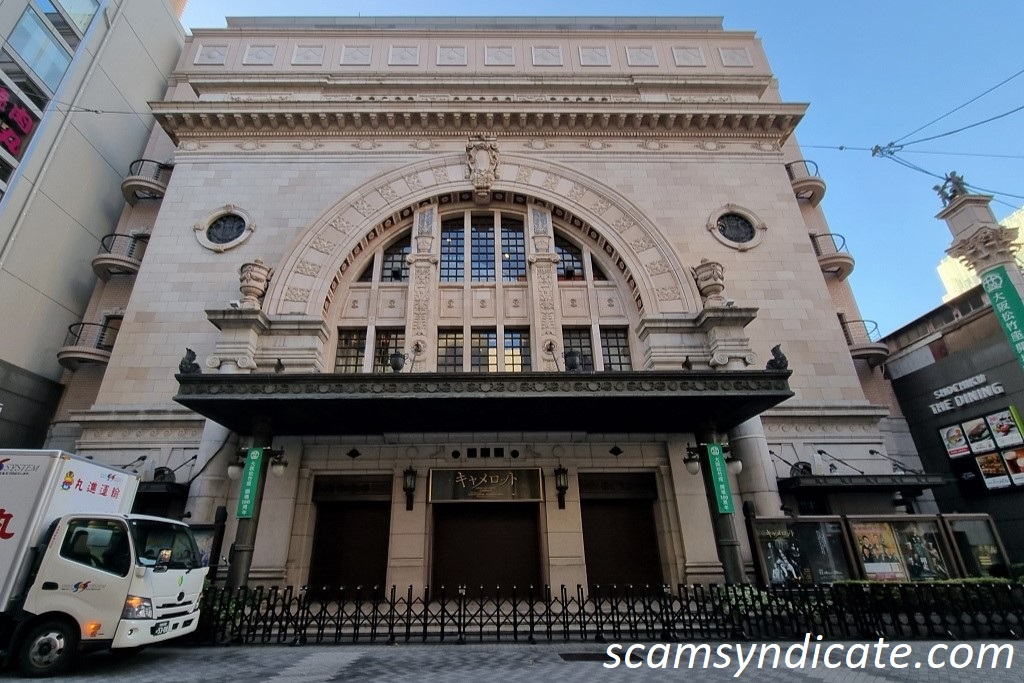
🎨 Kamigata Ukiyo-e Museum | 上方浮世绘馆
The Kamigata Ukiyo-e Museum is Osaka’s hidden gem dedicated to preserving the distinct Kamigata-style woodblock prints that flourished in 18th-19th century Osaka, showcasing vibrant kabuki actor portraits and theatrical scenes that capture the city’s historic entertainment district with bold colors and dramatic compositions unseen in Edo-period Tokyo prints. This intimate museum rotates its collection of 600+ works quarterly, allowing visitors to appreciate delicate original prints through magnifying glasses while learning about Osaka’s unique ukiyo-e tradition that emphasized local celebrities and pleasure quarters rather than the mountain landscapes popular in Edo – don’t miss the chance to try hands-on printing demonstrations using replica blocks to create your own Kamigata-style masterpiece.
这座专精于”上方浮世绘”的特色博物馆,珍藏18-19世纪大阪独有的歌舞伎演员肖像与剧场风景版画,以比江户版画更浓烈的色彩与动态构图展现当年道顿堀娱乐盛况。馆内每季轮换展出600余件藏品,游客可通过放大镜细赏真迹的细腻刀工,更能体验用复刻雕版亲手印制”役者绘”——这种聚焦本地艺伎与名优的独特艺术风格,与东京浮世绘的山水情趣形成鲜明对比,正是大阪”商都”活力在艺术中的绝妙体现。
🗼 Tsutenkaku Tower | 通天阁
Tsutenkaku Tower is Osaka’s beloved retro-futuristic landmark standing at 103 meters in the Shinsekai district, originally built in 1912 and rebuilt in 1956 with its distinctive neon-lit observation deck shaped like a Parisian Eiffel Tower meets Japanese space-age design. The tower’s fifth-floor observation platform features the lucky Billiken statue (rub its feet for good fortune) and offers panoramic views of Osaka’s sprawling cityscape, while the basement level immerses visitors in a nostalgic 1960s food alley with kushikatsu (deep-fried skewers) stalls and vintage pachinko parlors. Illuminated at night with colorful LED patterns that change seasonally, Tsutenkaku serves as the glowing heart of old-school Osaka, where the tower’s unique blend of Taisho-era charm and postwar optimism perfectly encapsulates the city’s unpretentious, fun-loving spirit.
这座103米高的地标建筑矗立在新世界街区,初建于1912年的通天阁在1956年重建后,融合了埃菲尔铁塔的造型与日本昭和未来的美学,其霓虹闪烁的展望台成为大阪最醒目的风景线。五层展望台供奉着招财的比利肯神像(摸摸脚底会带来好运),可俯瞰大阪全景;地下美食街则重现1960年代的怀旧风情,串炸摊位与老式柏青哥店林立。每当夜幕降临,随季节变换的LED灯光秀将塔身染成梦幻色彩,这座兼具大正浪漫与昭和活力的铁塔,正是大阪人”吃倒也要欢笑”精神的最佳象征。
🏯 Central Osaka | 中央区
🏯 Osaka Castle | 大阪城
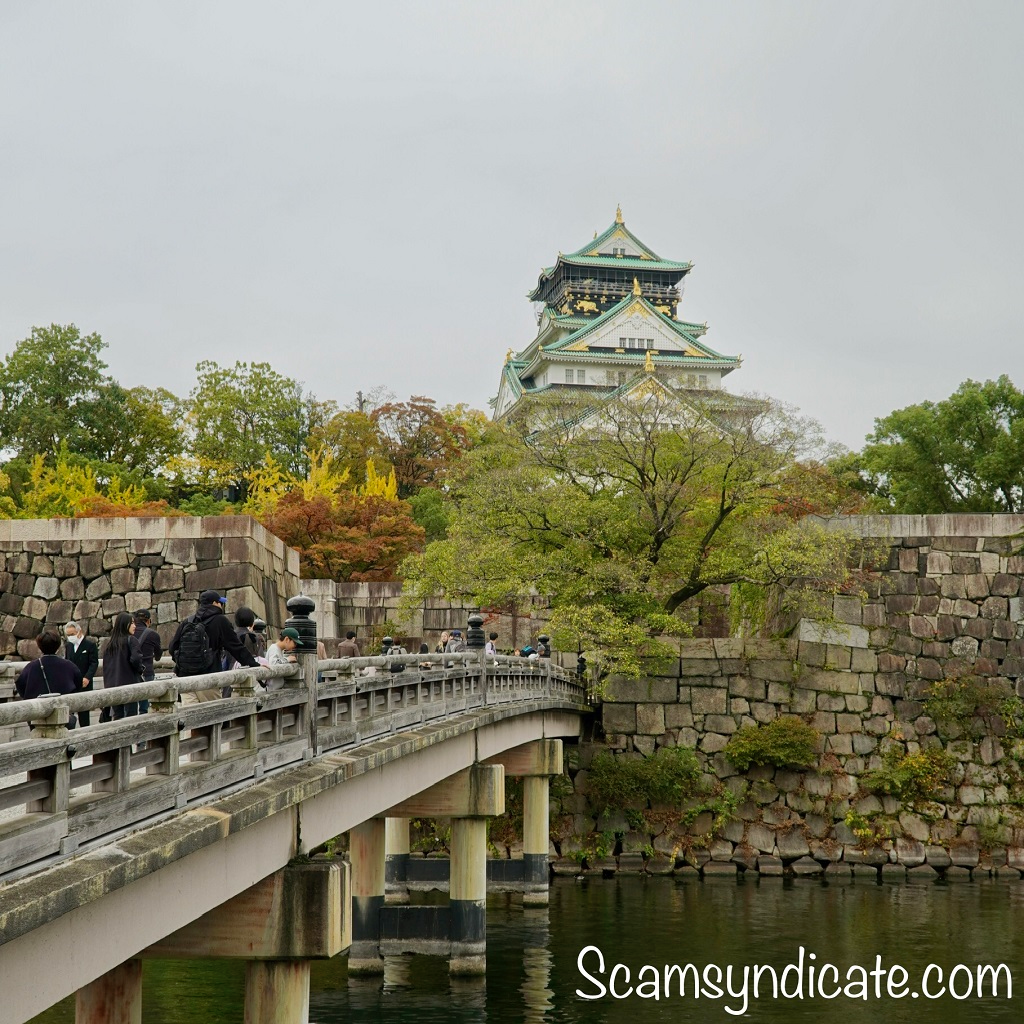
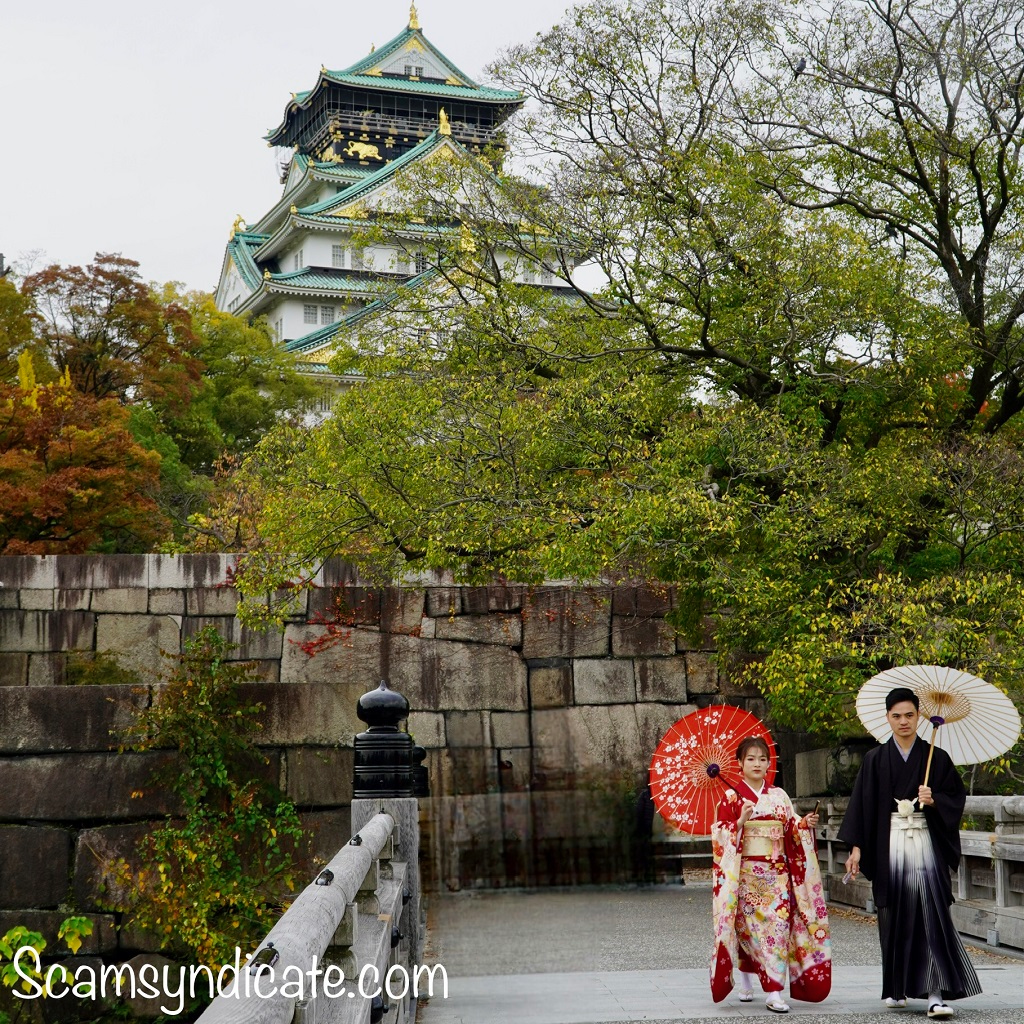
Osaka Castle is the iconic symbol of Osaka’s samurai heritage, a magnificent 16th-century fortress originally built by Toyotomi Hideyoshi that towers over a 15-acre park with moats and stone walls. The current five-story main keep (reconstructed in 1931) dazzles with its gold-leafed tiger ornaments and green roof tiles, housing a modern museum showcasing samurai armor and Hideyoshi’s life story. Surrounded by 600 cherry trees that create a pink canopy in spring and illuminated with dramatic night projections in autumn, the castle’s Nishinomaru Garden offers the most photogenic views of the shimmering golden turrets reflected in the inner moat, while the top-floor observation deck provides panoramic views of Osaka’s skyline – this perfect fusion of warlord ambition and modern civic pride stands as Japan’s most visited castle, attracting over 2.5 million annual visitors.
作为丰臣秀吉于1583年建造的战国雄城,大阪城现存的五层八阶天守阁(1931年重建)以金箔虎鯱与翡翠绿瓦片闪耀于15公顷的城址公园之上,护城河与巨石城墙仍诉说着昔日”难攻不落”的威名。城内博物馆珍藏战国甲胄与太阁生平史料,而种植着600株樱花的西之丸庭园春季如粉色云海,秋季则有光影秀将天守阁投射成梦幻画布,尤其当金色楼阁倒映在内堀水面时最为震撼。作为日本访问量第一的城堡(年接待250万人次),这座兼具武士野心与现代城市精神的建筑奇迹,从顶层展望台可同时眺望大阪天际线与历史石垣,完美诠释着大阪的古今交融。
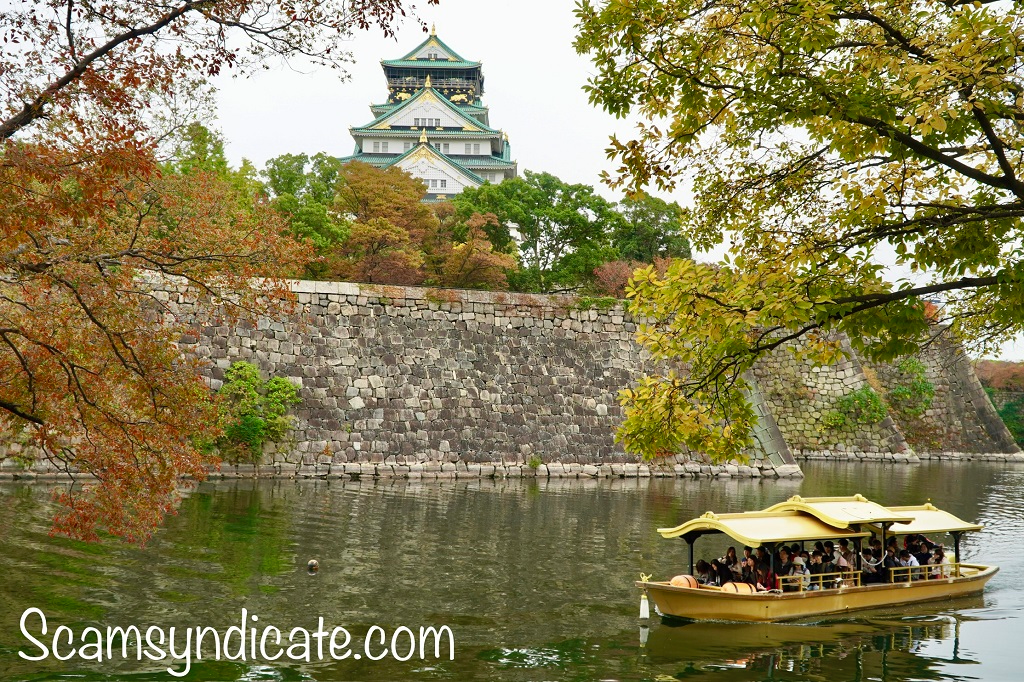
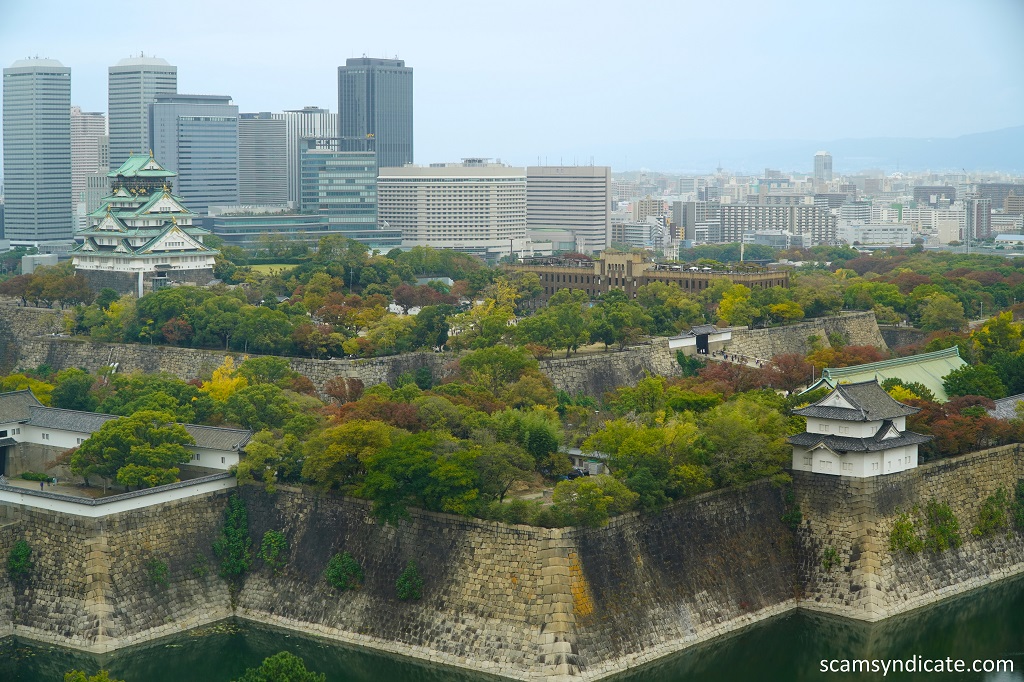
🖼️ Osaka Museum of History | 大阪历史博物馆
The Osaka Museum of History is a striking modern architectural marvel located adjacent to Osaka Castle, where visitors embark on a chronological journey through Osaka’s 1,400-year history from the ancient Naniwa Palace era to the bustling merchant city of the Edo period and modern metropolis. The museum’s ingenious design allows guests to start their exploration on the 10th floor and descend through time, featuring life-size reconstructions of a Naniwa Palace corridor, full-scale replica of a 19th-century streetscape with authentic shop interiors, and interactive exhibits showcasing Osaka’s development as Japan’s commercial capital. Floor-to-ceiling windows provide breathtaking real-time views of the actual Osaka Castle ruins being excavated below, creating a unique dialogue between the museum’s artifacts and the living historical site just outside its walls – this innovative approach earned it recognition as one of Japan’s most engaging history museums, with special exhibitions that bring to life everything from samurai culture to postwar economic miracles.
这座与大阪城比邻而立的现代建筑奇迹,以独创的”自上而下”时空隧道设计,带游客穿越大阪1400年历史长河——从10楼难波宫复原展厅的朱漆廊柱,到实景搭建的江户町人街市,再到展现近代商都活力的互动展区。全景落地窗将正在发掘的 Osaka Castle 遗迹实时呈现,形成馆内文物与窗外遗址的震撼对话。尤其令人称道的是等比例复原的19世纪店铺 interiors 与考古现场透明展示柜,配合定期举办的战国武将特展或昭和怀旧主题展,让大阪从古代宫都、天下厨房到现代经济中心的每个历史切面都变得触手可及,连续多年获评”日本最具临场感历史博物馆”。
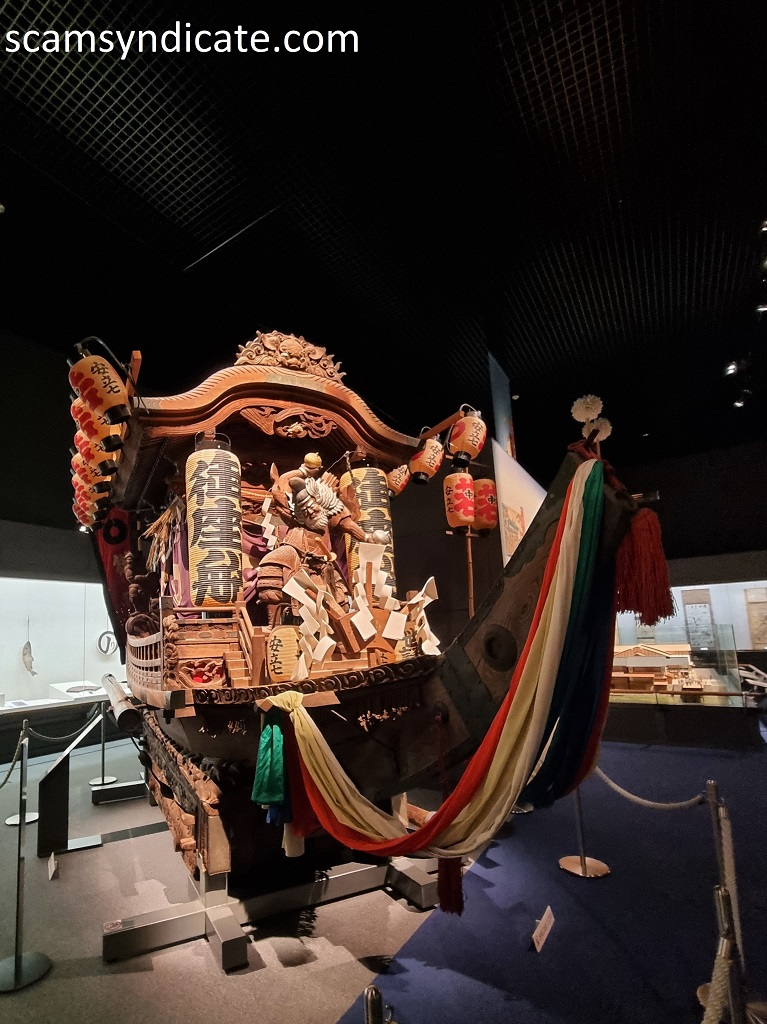
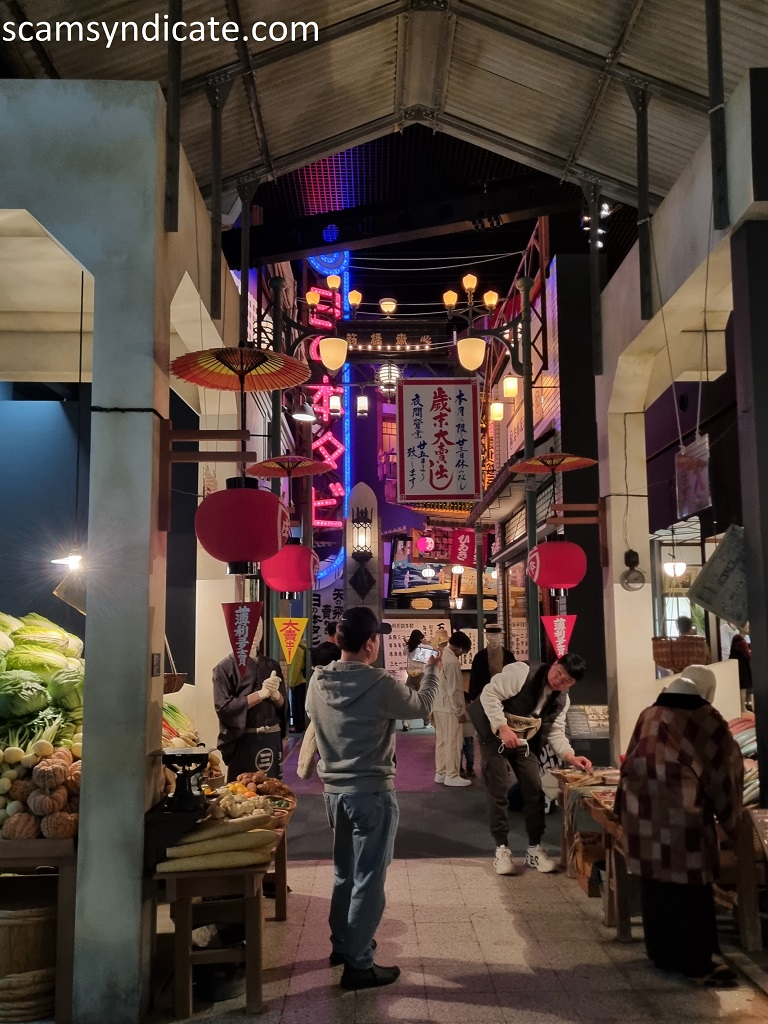
📡 NHK Broadcasting Center | NHK放送中心
The NHK Broadcasting Center Osaka is the Kansai region’s premier media hub operated by Japan’s national public broadcaster, featuring a state-of-the-art open studio where visitors can observe live news and program productions through glass walls. The facility includes interactive exhibits showcasing NHK’s broadcasting history, famous drama sets like the Taiga historical series, and cutting-edge 8K ultra-high-definition technology demonstrations. A major highlight is the popular “Domo-kun” character meet-and-greet area and the chance to try virtual weather forecasting in front of a green screen. Located in the Osaka Business Park area with its distinctive modern architecture, the center offers behind-the-scenes insights into Japan’s media world while hosting regular public events and concerts in its multipurpose hall.
作为日本放送协会(NHK)在关西地区的核心据点,大阪NHK放送中心以其开放式透明演播厅著称,游客可隔窗直击新闻直播与节目制作现场。馆内设有NHK历史展示区、大河剧经典场景还原及8K超高清技术体验,最受欢迎的是吉祥物”多摩君”(Domo-kun)互动区与虚拟天气预报体验台。坐落于大阪商务园区内的现代化建筑内,该中心定期举办公开录影与音乐会,是了解日本传媒产业运作的绝佳场所。
🌆 Umeda Area | 梅田区
🏢 Umeda Sky Building | 梅田蓝天大厦
The Umeda Sky Building’s Floating Garden Observatory is one of Osaka’s most breathtaking attractions, offering a 360-degree panoramic view from its 173-meter-high open-air deck that connects the building’s twin towers – accessed via a mesmerizing glass-enclosed escalator that ascends diagonally through the towers like a futuristic gateway to the sky. The observatory’s unique circular design provides unobstructed views of Osaka’s sprawling cityscape, Seto Inland Sea, and distant mountains, with the “Lumi Deck” illumination creating a magical atmosphere after sunset when the city lights shimmer below. The heart-pounding escalator ride through the building’s dramatic atrium space gives visitors the surreal sensation of floating between the towers before emerging onto the spectacular rooftop garden, making this architectural marvel a must-visit for both its engineering ingenuity and unparalleled vistas.
梅田蓝天大厦的空中庭园展望台位于173米高空,通过连接双塔的透明悬空自动扶梯抵达,这条犹如穿越时空隧道般的扶梯以倾斜角度贯穿大厦中庭,将游客引向360度无死角的环形观景平台。日间可眺望大阪街景、濑户内海与远山轮廓,入夜后”光之广场”的地面照明与脚下闪烁的都市霓虹共同编织出梦幻景致。最令人屏息的莫过于搭乘扶梯时仿佛悬浮于双塔之间的震撼体验,最终抵达顶层的星空花园,这处融合了建筑奇迹与绝景视野的圣地,完美诠释了大阪作为未来之城的魅力。
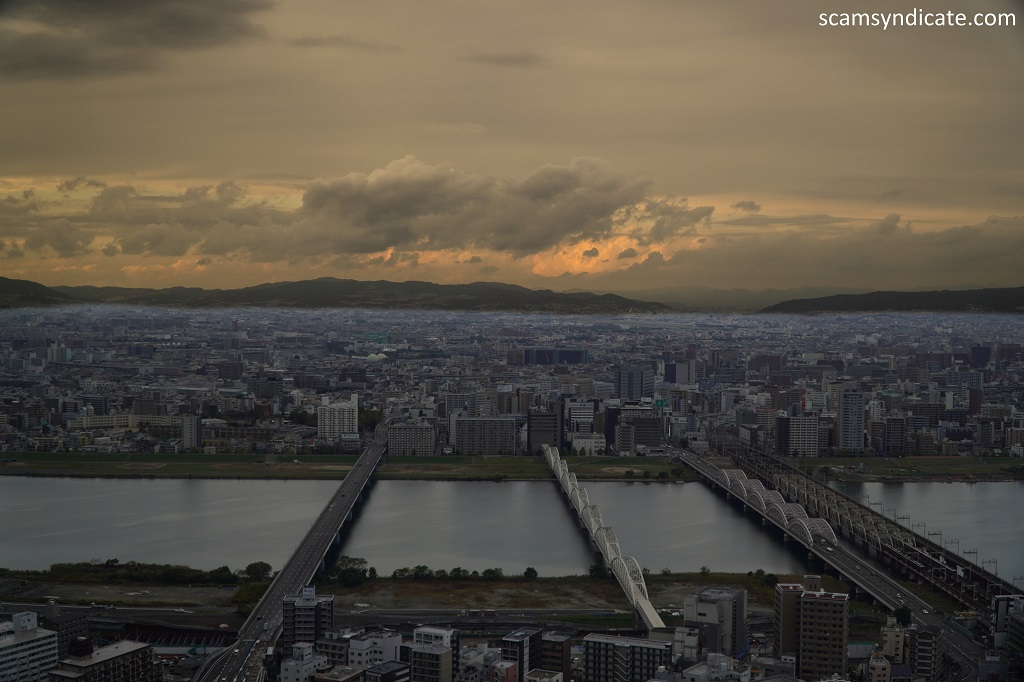
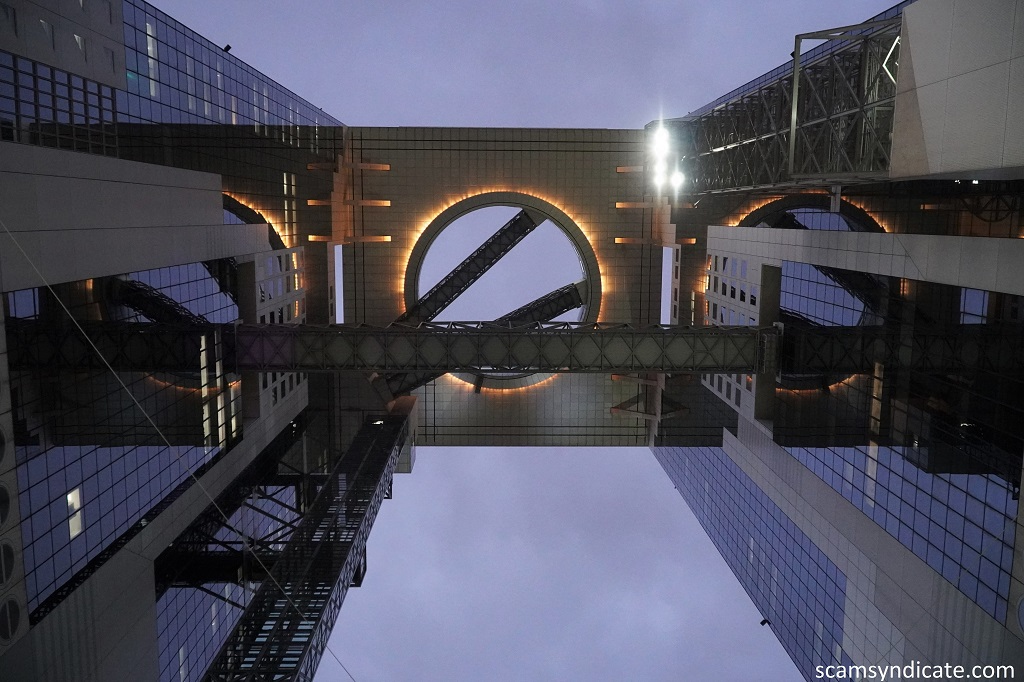
🎡 HEP FIVE Ferris Wheel | HEP FIVE摩天轮
The HEP FIVE Ferris Wheel is one of Osaka’s most iconic landmarks, a giant red wheel standing 106 meters tall atop the HEP FIVE shopping complex in Umeda, offering breathtaking 360-degree views of the entire Osaka cityscape from its fully enclosed, air-conditioned cabins during the 15-minute ride. Illuminated by 15,000 LED lights that transform the wheel into a glowing crimson jewel at night, this urban attraction combines shopping and entertainment with heart-stopping vistas, passing so close to neighboring skyscrapers that riders can almost touch them – the perfect introduction to Osaka’s electrifying city energy and a romantic must-do experience especially when the wheel’s special “couple cabins” with transparent floors operate during evening hours.
这座106米高的鲜红色摩天轮雄踞梅田HEP FIVE商厦屋顶,15分钟的运转时间内,全透明空调包厢将大阪全景尽收眼底。当夜幕降临,15000颗LED灯将其染成璀璨的红宝石,与周边摩天楼群近在咫尺的惊险距离成为最大特色。作为都市浪漫地标,特别设置的透明地板”情侣包厢”在夜间运营,让游客在购物娱乐之余,体验悬浮于大阪夜空之上的心跳加速,是感受这座不夜城魔力的最佳方式。
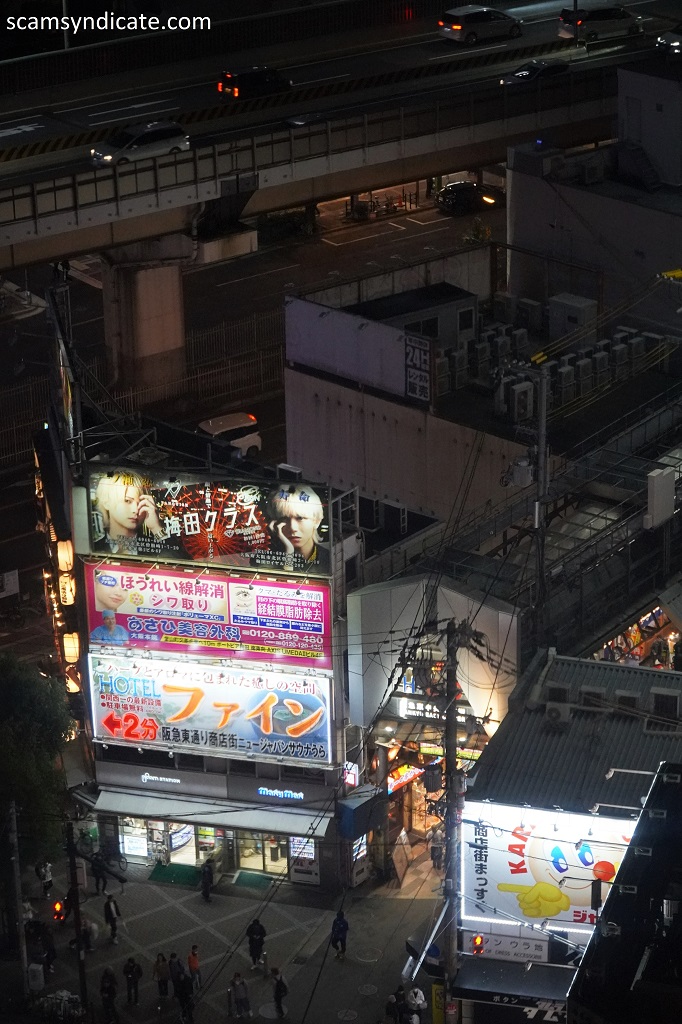
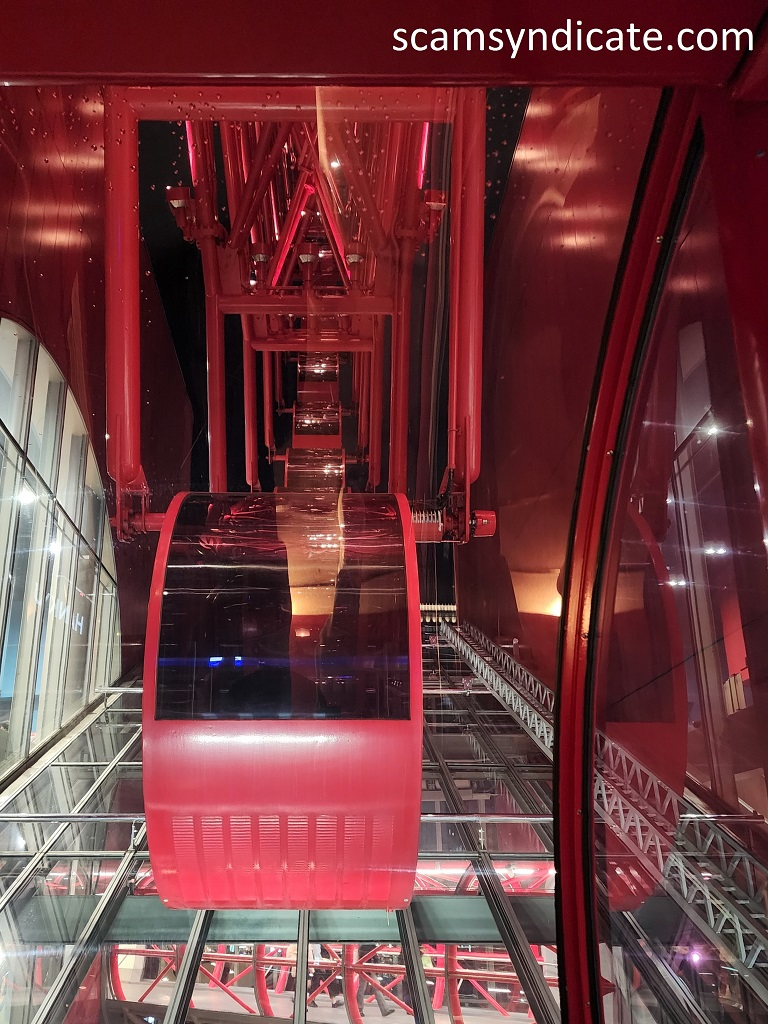
🌊 Osaka Bay Area | 大阪港区
🚢 Osaka Port | 大阪港
Osaka Port is the dynamic gateway to Japan’s western region, blending industrial might with tourist attractions like the iconic Tempozan Ferris Wheel and Kaiyukan Aquarium – one of the world’s largest. This bustling harbor handles over 2 million containers annually while offering leisure cruises through its network of canals, where visitors can spot massive cargo ships alongside sightseeing boats. The port area transforms at night when the Harbor Village illumination project bathes the docks in colorful lights, creating stunning reflections on the water that complement the glowing Osaka Bay skyline. From the historic Nanko Bird Sanctuary to the modern Universal Studios Japan waterfront, Osaka Port perfectly encapsulates the city’s harmonious balance of commerce, ecology and entertainment.
作为日本关西地区海运枢纽的大阪港,将工业实力与旅游魅力完美融合——拥有世界级的天保山摩天轮与海游馆,每年处理超200万个集装箱的同时,运河游船线路让游客近距离观赏巨轮穿梭的壮观景象。夜幕降临时,港湾村落灯光秀将码头染成梦幻国度,水面倒映着大阪湾璀璨夜景。从南港野鸟园的自然生态到环球影城的欢乐海岸,这片海域生动诠释着大阪”港都”特质:既是经济命脉,也是市民休闲的蓝色客厅。
🚢 Santa Maria Cruise | 圣玛利亚号游船
The Santa Maria cruise ship is a full-scale replica of Christopher Columbus’s legendary vessel that offers unforgettable sightseeing tours around Osaka Bay, standing out with its striking white sails and 28-meter height against the modern port skyline. This 45-minute daytime or twilight cruise provides panoramic views of Universal Studios Japan, Tempozan Ferris Wheel, and the Akashi Kaikyo Bridge from its open decks and climate-controlled cabins, complete with historical exhibits about 15th-century navigation. Particularly magical during sunset sails when the crimson sails glow against the orange sky, the Santa Maria becomes a moving landmark itself – with special evening illumination cruises available during summer fireworks festivals that transform the ship into a floating jewel on Osaka Bay’s waters.
这艘按哥伦布旗舰1:1复制的白色帆船是天保山码头最醒目的地标,28米高的桅杆与雪白风帆在现代化港口勾勒出穿越时空的浪漫画面。45分钟的日间或黄昏航程中,游客可在开放式甲板或空调客舱欣赏环球影城、明石海峡大桥等海湾美景,船内还设有大航海时代主题展览。夏季烟花大会期间推出的特别夜航最令人惊艳——当船身灯光与海上花火同时点亮,仿佛一艘从历史驶入梦幻的珍珠宝船。
🎡 Tempozan Ferris Wheel | 天保山大摩天轮
The Tempozan Ferris Wheel is one of Osaka’s most iconic attractions, standing 112.5 meters tall with a diameter of 100 meters as Japan’s largest ferris wheel when it opened in 1997, offering breathtaking 17-minute rides in its 60 climate-controlled cabins that provide panoramic views of Osaka Bay, the Akashi Kaikyo Bridge, and Mount Rokko. Located at the Osaka Kaiyukan aquarium complex, this giant wheel transforms into a dazzling light show after dark with 16 million color combinations illuminating its steel framework – including special “weather forecasts” displayed through color-coded lighting patterns. The transparent-bottomed “see-through” cabins add an extra thrill as riders float high above the harbor, making it particularly romantic during sunset when the wheel’s reflection shimmers across the water.
这座112.5米高、直径100米的巨型摩天轮是1997年开业时日本第一的观景地标,60个全透明空调包厢带来17分钟的震撼体验,将大阪湾、明石海峡大桥与六甲山尽收眼底。坐落于海游馆旁的摩天轮夜间化身为光影艺术品,1600万种色彩组合的LED照明会变幻出”天气预告”等特殊灯光秀,其中底部透明的”悬空包厢”让乘客仿佛漂浮于港湾上空,尤其当夕阳西下时,摩天轮倒映在海面的金色波光更成为情侣们最钟爱的浪漫时刻。
🛺 Glico Museum Vintage Car Collection | 格力高古董车博物馆
The Glico Museum’s Vintage Car Collection presents a fascinating automotive time capsule featuring 20+ meticulously restored classic European and American cars from the 1920s-1960s displayed alongside Japan’s iconic candy history, where a gleaming 1959 Cadillac Eldorado convertible shares the spotlight with the evolution of Pocky snack packaging. This unique crossover exhibition contrasts chrome-plated automotive glamour with sweet nostalgia, allowing visitors to admire rare vehicles like 1930s Rolls-Royce Phantoms and Ford Model Ts while learning how Osaka became Japan’s confectionery capital – don’t miss the photo opportunity with the candy-red 1961 Chevrolet Corvette parked beneath the museum’s giant replica of the famous Glico running man neon sign from Dotonbori.
格力高博物馆的古董车展区珍藏20余辆1920-1960年代的欧美经典车型,当闪耀的1959年凯迪拉克Eldorado与”百奇”饼干的历史包装并列展出,形成了钢铁机械与甜蜜回忆的奇妙对话。从1930年代劳斯莱斯幻影到福特T型车,这些精心修复的老爷车讲述着工业美学传奇,而背景里大阪糖果发展史则揭示了这座”天下厨房”的另一面——最受欢迎的打卡点当属道顿堀同款格力高广告牌下那辆糖果红色的1961年雪佛兰科尔维特。
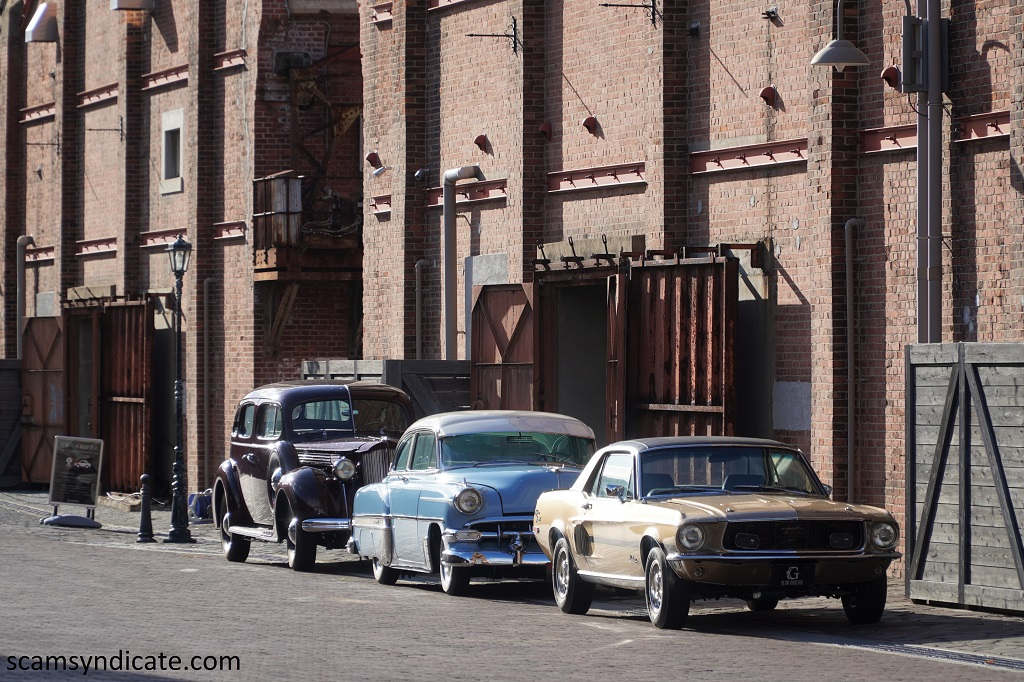
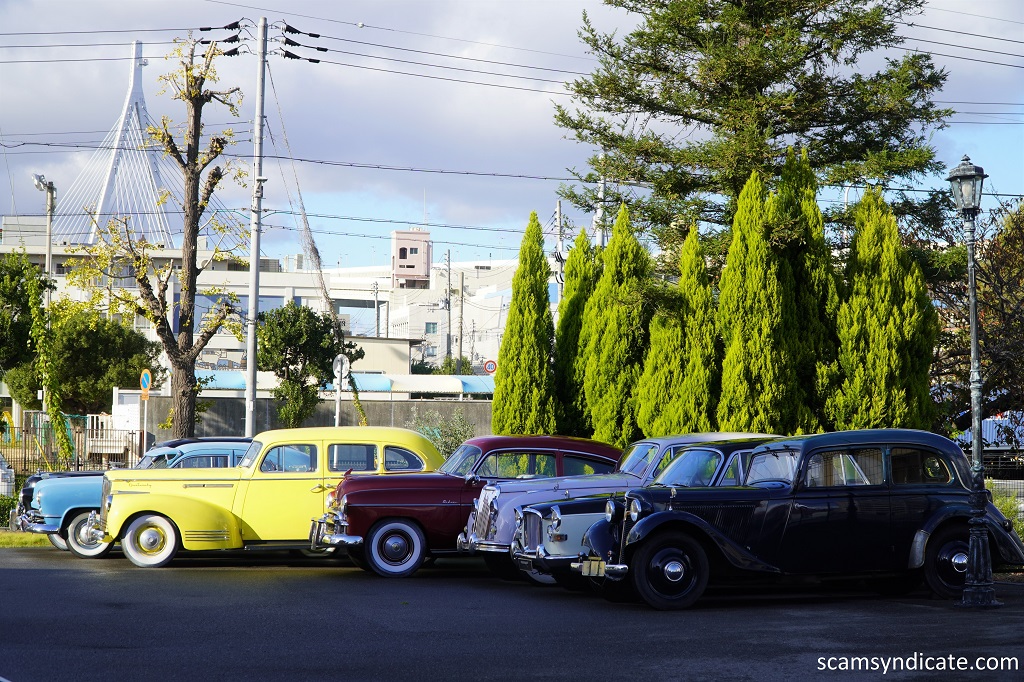
🌿 Northern Osaka | 北部大阪
🛍️ Expo Park | 万博公园
Expo Park is a sprawling cultural oasis built on the 1970 World Expo site, dominated by the surreal Tower of the Sun – artist Taro Okamoto’s 70-meter-tall futuristic sculpture with three faces symbolizing past/present/future that contains hidden museum spaces inside its organic form. This 264-hectare park blends nature and avant-garde architecture with cherry blossom groves, the National Museum of Ethnology, and the interactive Kids Plaza Osaka. Adjacent LaLaport EXPOCITY represents Japan’s largest entertainment complex, featuring the world’s first Pokémon Center with a gym arena, 4K IMAX theaters, and the dazzling Nifrel aquatic-zoo hybrid where visitors can touch stingrays before shopping at 300+ stores – together creating a perfect fusion of 1970s Expo legacy and 21st-century attractions under Osaka’s northern skyline.
这座建立在1970年世博会旧址上的264公顷文化公园,最震撼的莫过于冈本太郎设计的70米高太阳塔——塔身三副面孔分别象征过去/现在/未来,内部隐藏着博物馆空间,其生物形态的造型至今仍充满未来感。园内樱花林、国立民族学博物馆与儿童乐园错落分布。毗邻的LaLaport EXPOCITY是日本最大复合商业体,拥有全球首家带道场的宝可梦中心、4K IMAX影院,以及可触摸鳐鱼的Nifrel生态馆等体验设施,300余家商铺更让这里成为传统与现代碰撞的超级娱乐空间,延续着大阪世博会的创新基因。
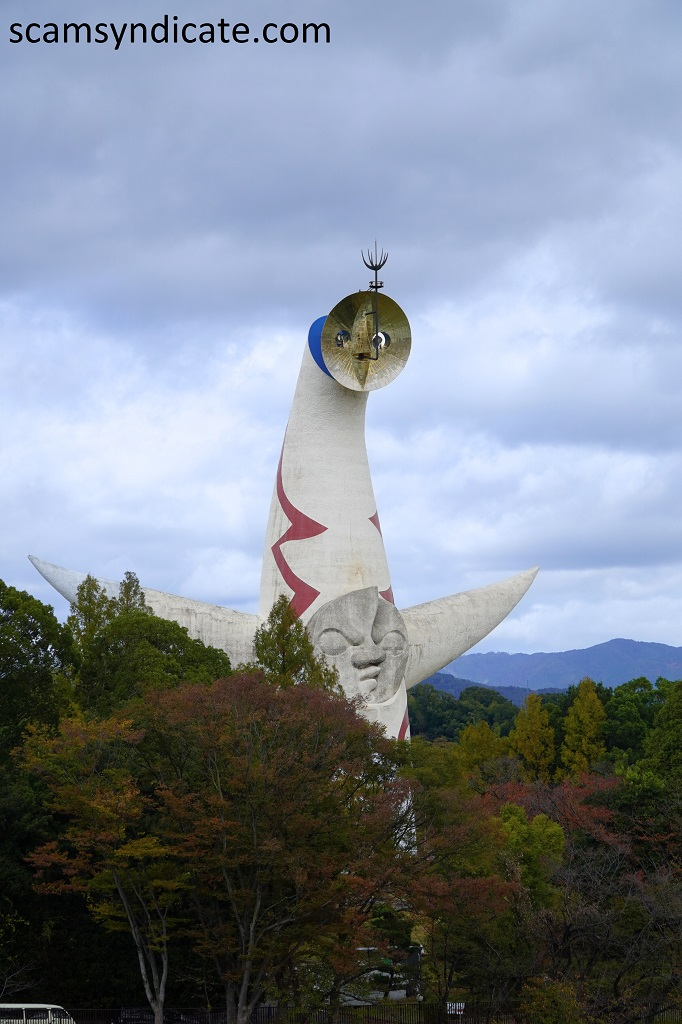
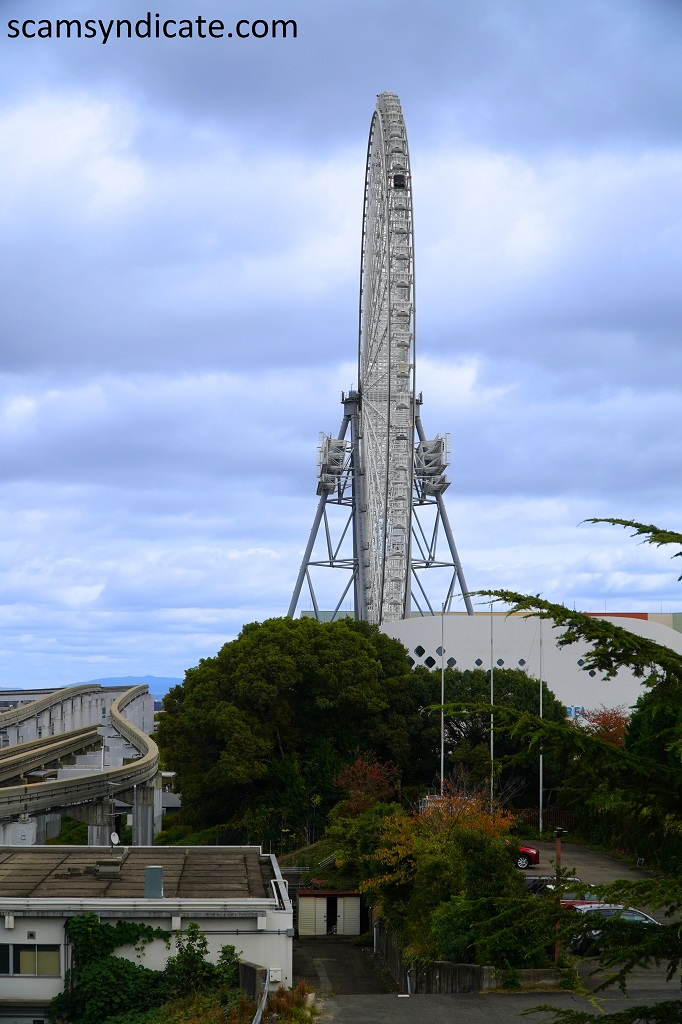
🌏 Kansai Travel Guide 关西旅游指南 🌏
🌸 Best Time to Visit 最佳旅行时间
✅ April: Cherry blossoms at Maruyama Park (Kyoto) & Expo ’70 Park (Osaka).
✅ July: Gion Matsuri festival (Kyoto’s iconic parade).
✅ November: Fall foliage at Tofukuji Temple (Kyoto) & Mt. Rokko (Kobe).
✅ 4月:京都圆山公园夜樱、大阪万博公园樱花。
✅ 7月:京都祇园祭花车游行(全年最盛大!)。
✅ 11月:东福寺红叶、六甲山枫叶(神户最佳)。
🏨 Where to Stay 住宿推荐
🏙️ Osaka: Namba (shopping/nightlife) or Umeda (business hubs).
🏯 Kyoto: Gion/Pontocho (traditional ryokans) – book 3+ months early for cherry/fall seasons!
🌊 Kobe: Harborland (waterfront views) or Sannomiya (central).
🍵 Uji: Stay near Byodoin Temple for early-morning matcha tours.
🦌 Nara: Guesthouses near Nara Park (easy deer access).
🏙️ 大阪:难波(购物方便)或梅田(交通枢纽)。
🏯 京都:祇园/先斗町(传统町屋)– 樱花/枫叶季需提前3个月订房!
🌊 神户:Harborland(海景)或三宫(市中心)。
🍵 宇治:平等院附近民宿(清晨抹茶体验)。
🦌 奈良:奈良公园旁Guesthouse(随时见鹿)。
🚆 Transport Guide 交通指南
🎫 ICOCA Card: Works on trains/buses across Kansai.
🚌 Kyoto Buses: Pay when exiting (¥230 flat fare in central zone).
🚎 Kobe City Loop: ¥260/ride or ¥660/day pass.
🚲 Bonus: Rent bikes in Arashiyama (¥1,000/day).
🎫 ICOCA卡:关西地铁/巴士/便利店通用。
🚌 京都巴士:后门上车,前门下车付费(均一区间230日元)。
🚎 神户City Loop:单次260日元,一日券660日元更划算。
🚲 彩蛋:岚山租自行车(1000日元/天)。
💰 Budget Tips 省钱小贴士
📌 Osaka Amazing Pass: Free entry to 40+ attractions + unlimited subway.
📌 Kyoto Bus Pass: ¥700 for unlimited daily rides.
🍱 Eat Smart: Conveyor-belt sushi for ¥100/plate (Osaka’s Dotonbori).
📌 大阪周游券:40+景点免费+地铁无限坐。
📌 京都巴士一日券:700日元无限搭乘。
🍣 吃货技巧:大阪回转寿司(100日元/盘起)。
🍜 Must-Eat Food 美食地图
🍢 Osaka: Takoyaki (Dotonbori Kukuru), kushikatsu (deep-fried skewers).
🍵 Kyoto/Uji: Matcha parfaits (Nakamura Tokichi), kaiseki lunch sets (half-price vs. dinner!).
🥩 Kobe: Certified Kobe beef (look for official “神戸肉” logo).
🍘 Nara: Kakinoha sushi (persimmon-leaf-wrapped fish).
🐙 大阪:道顿堀「くくる」章鱼烧、新世界串炸。
🍵 京都/宇治:中村藤吉抹茶芭菲、怀石料理午餐(比晚餐便宜50%!)。
🥩 神户:认准「神戸肉」标章的和牛。
🍙 奈良:柿叶寿司(鲑鱼包裹)。
📱 Essential Apps 必备应用程序
🗺️ Google Maps: Train schedules + walking routes.
🚉 Japan Travel: Real-time JR train updates.
💬 Google Translate: Scan menus/signs.
🗺️ Google地图:导航+实时公交。
🚉 Japan Travel:JR列车时刻查询。
📖 Google翻译:菜单拍照翻译。
🙏 Cultural Etiquette 文化礼仪
👟 Temples/Shrines: Remove shoes where required.
📸 Geisha: No touching/chasing; photos from a distance.
🦌 Nara Deer: Bow to them for treats (but don’t tease!).
👟 寺庙/神社:看到脱鞋标志需遵守。
📸 艺伎:保持距离拍照,勿追逐。
🦌 奈良鹿:鞠躬互动(但别戏弄它们!)。
🎁 Souvenirs 伴手礼推荐
🍡 Kyoto: Yatsuhashi (cinnamon mochi), Uji matcha.
🍘 Osaka: Glico Pocky, 551 Horai pork buns.
🍷 Kobe: Kobe wine or Nunobiki herb teas.
🍡 京都:八桥饼、宇治抹茶。
🍘 大阪:固力果Pocky、551蓬莱肉包。
🍷 神户:神户葡萄酒或布引香草茶。
⚠️ Important Notes 特别提醒
1️⃣ Typhoon Season: June-September (check alerts).
2️⃣ Cash: Small shops/ryokans only accept cash.
3️⃣ Reservations: Imperial Palace (Kyoto) requires online booking.
1️⃣ 台风季:6-9月(注意气象警报)。
2️⃣ 现金:小店/民宿只收现金。
3️⃣ 预约制:京都御所需官网提前预约。